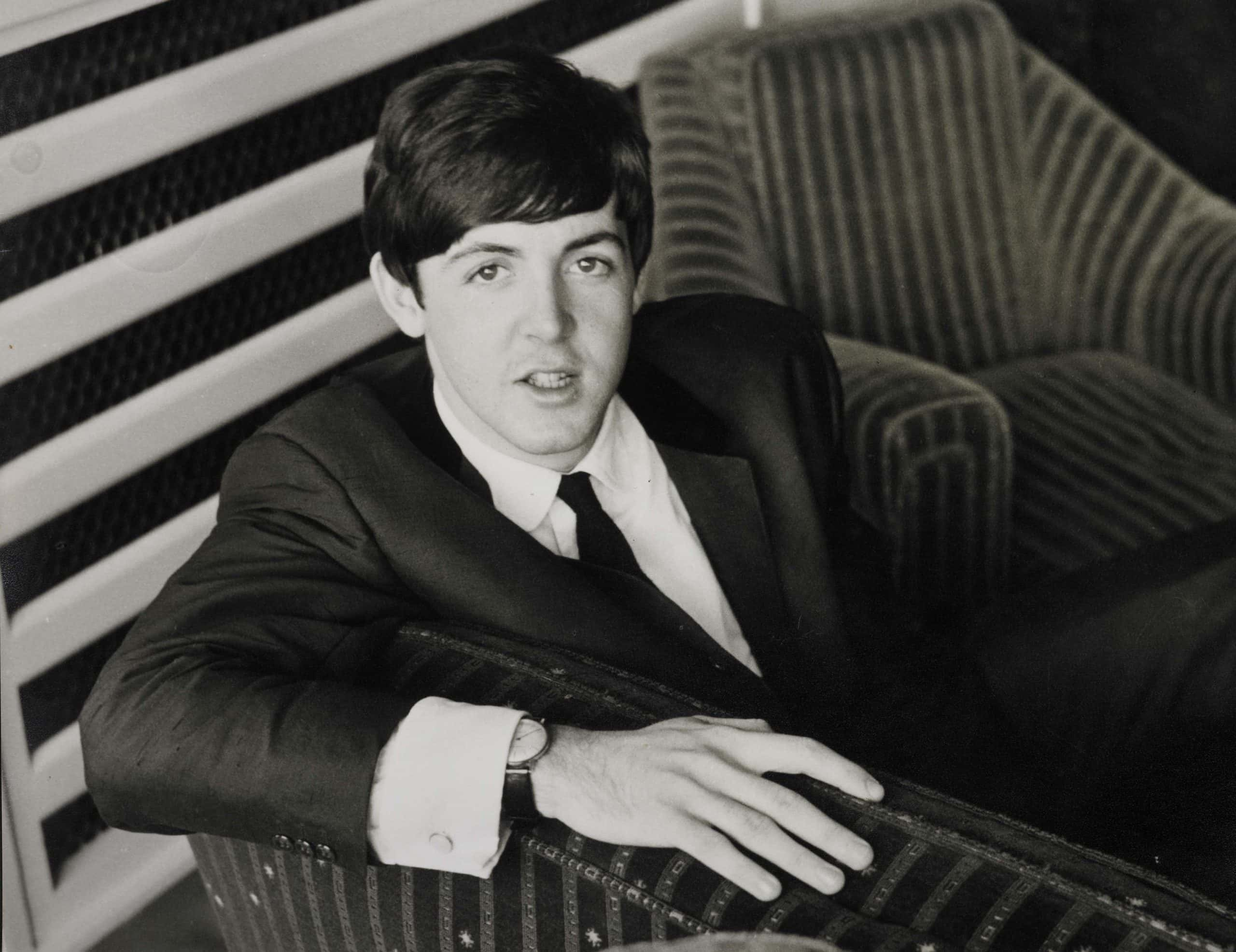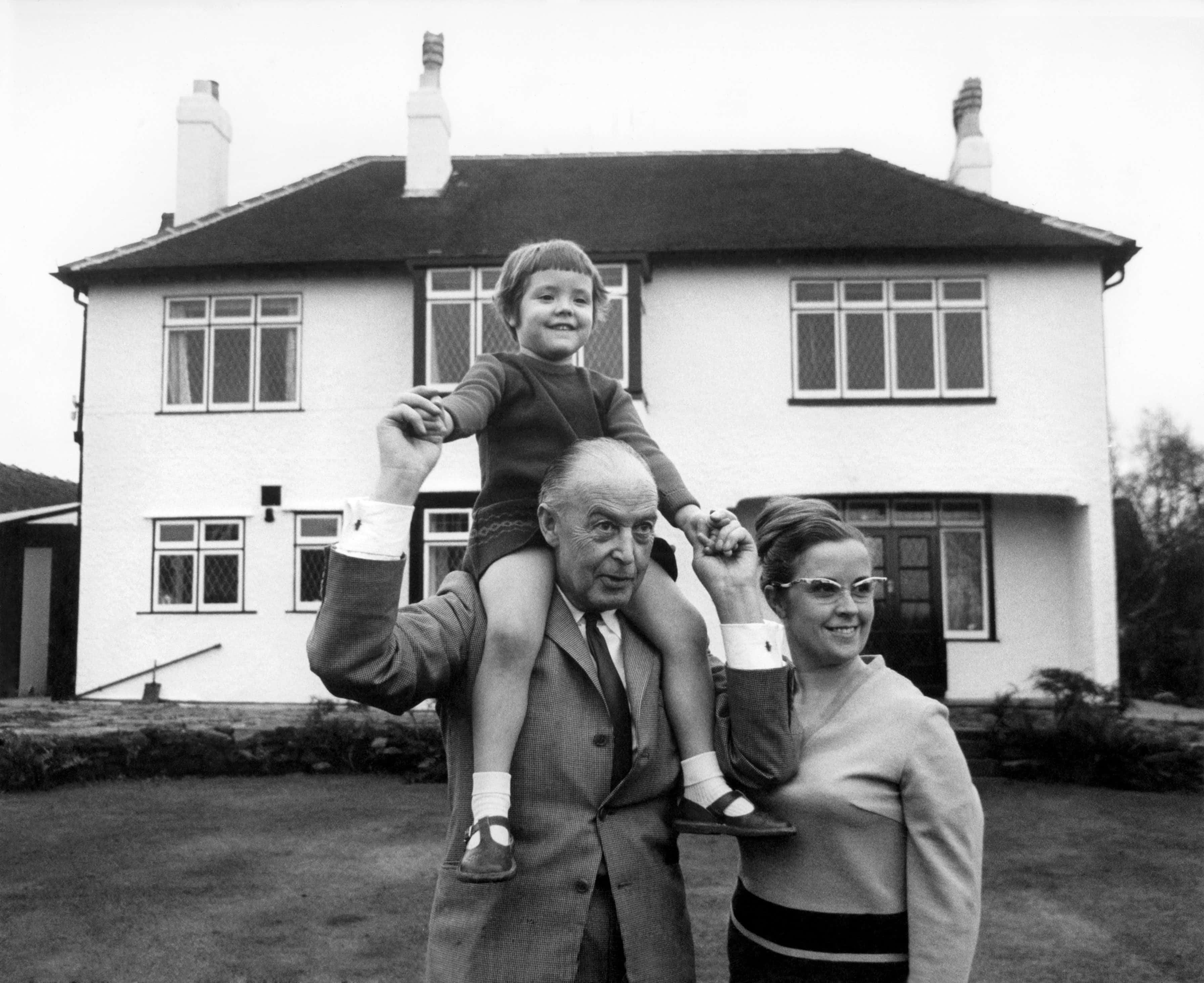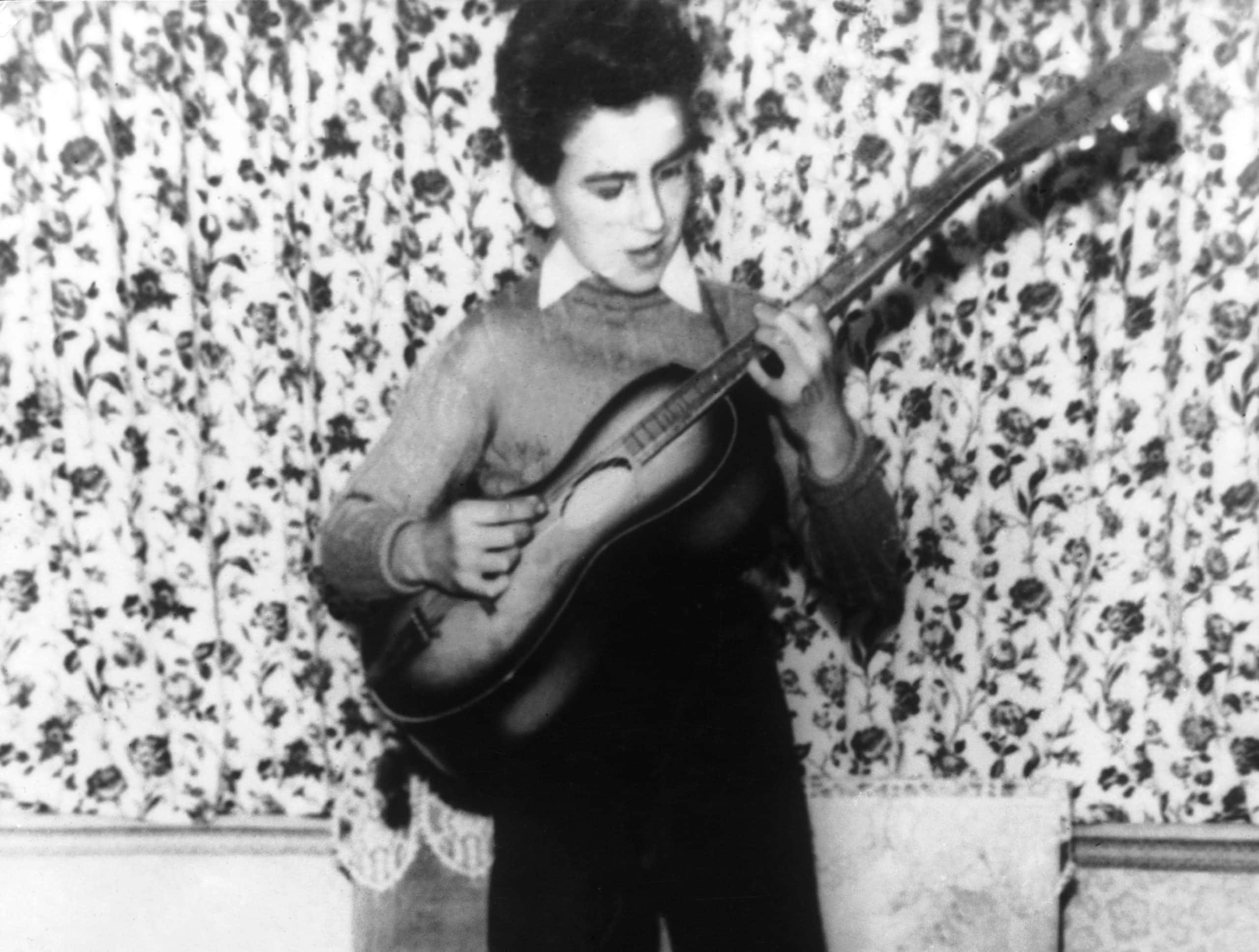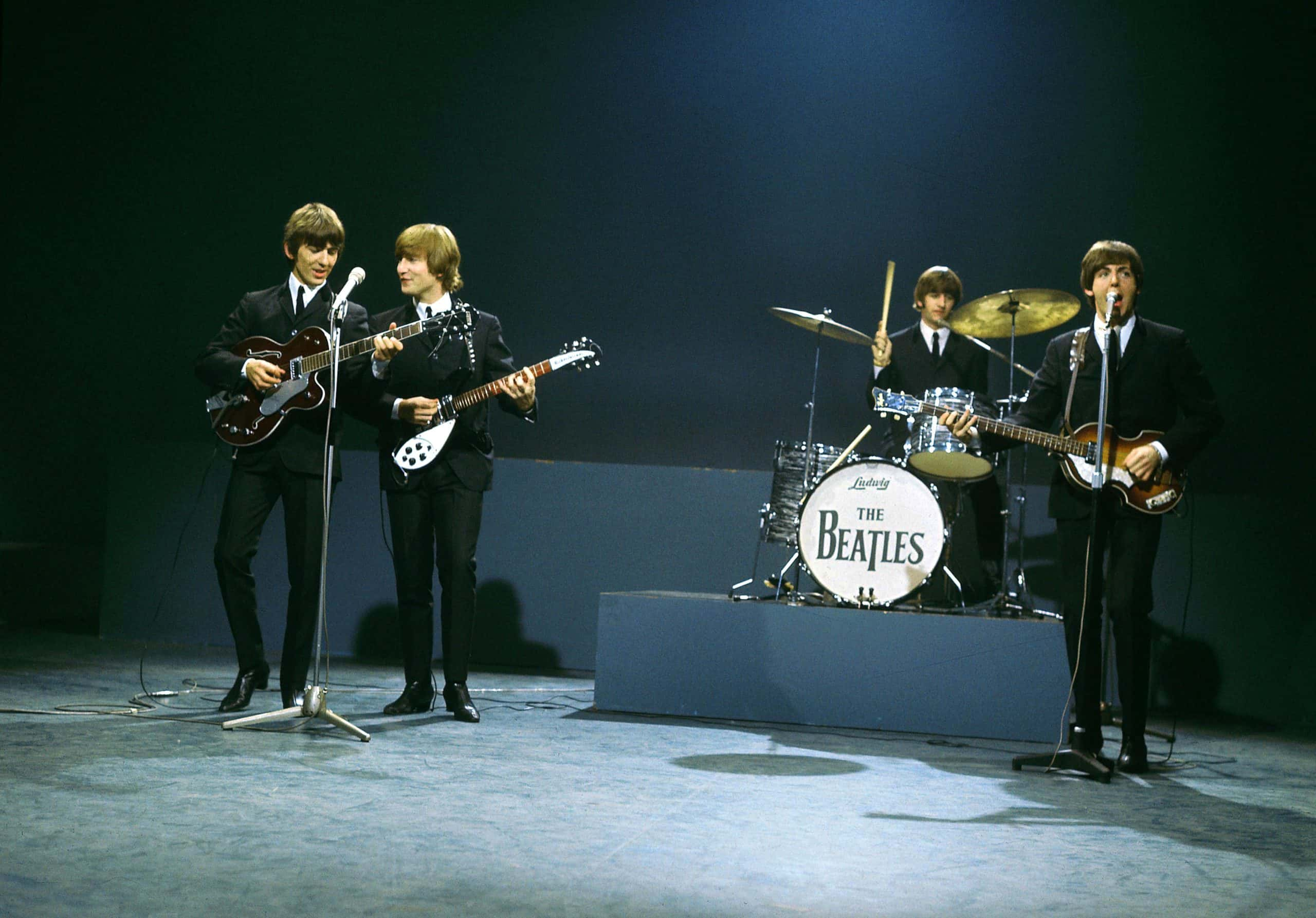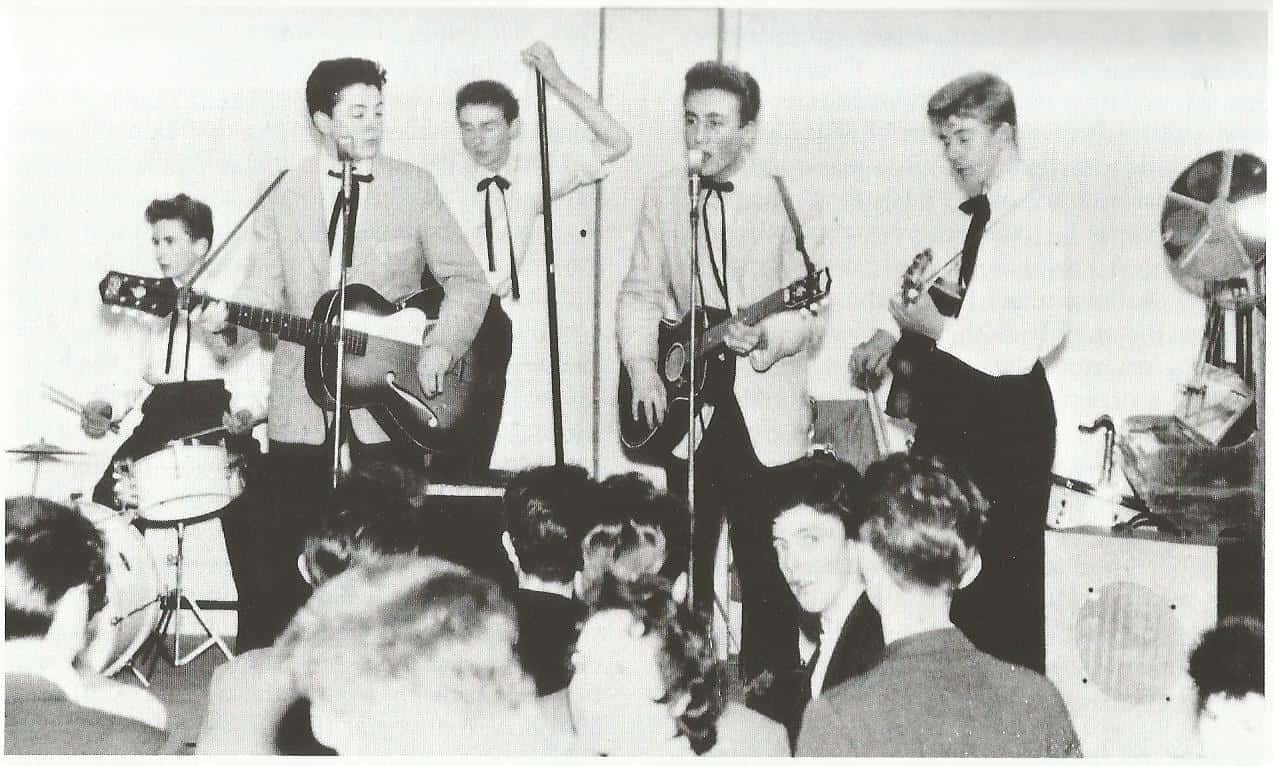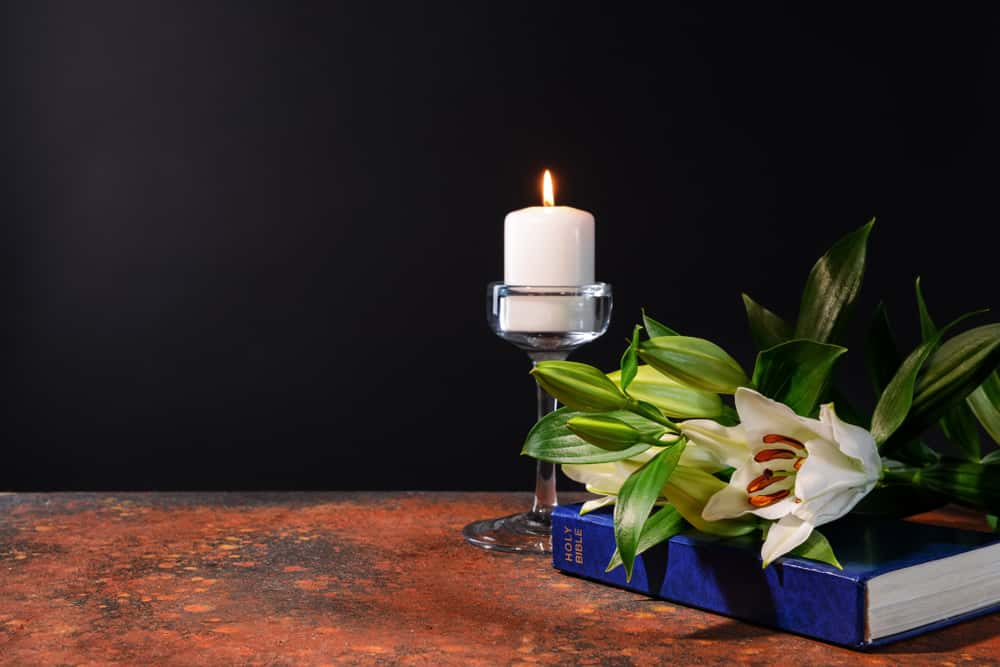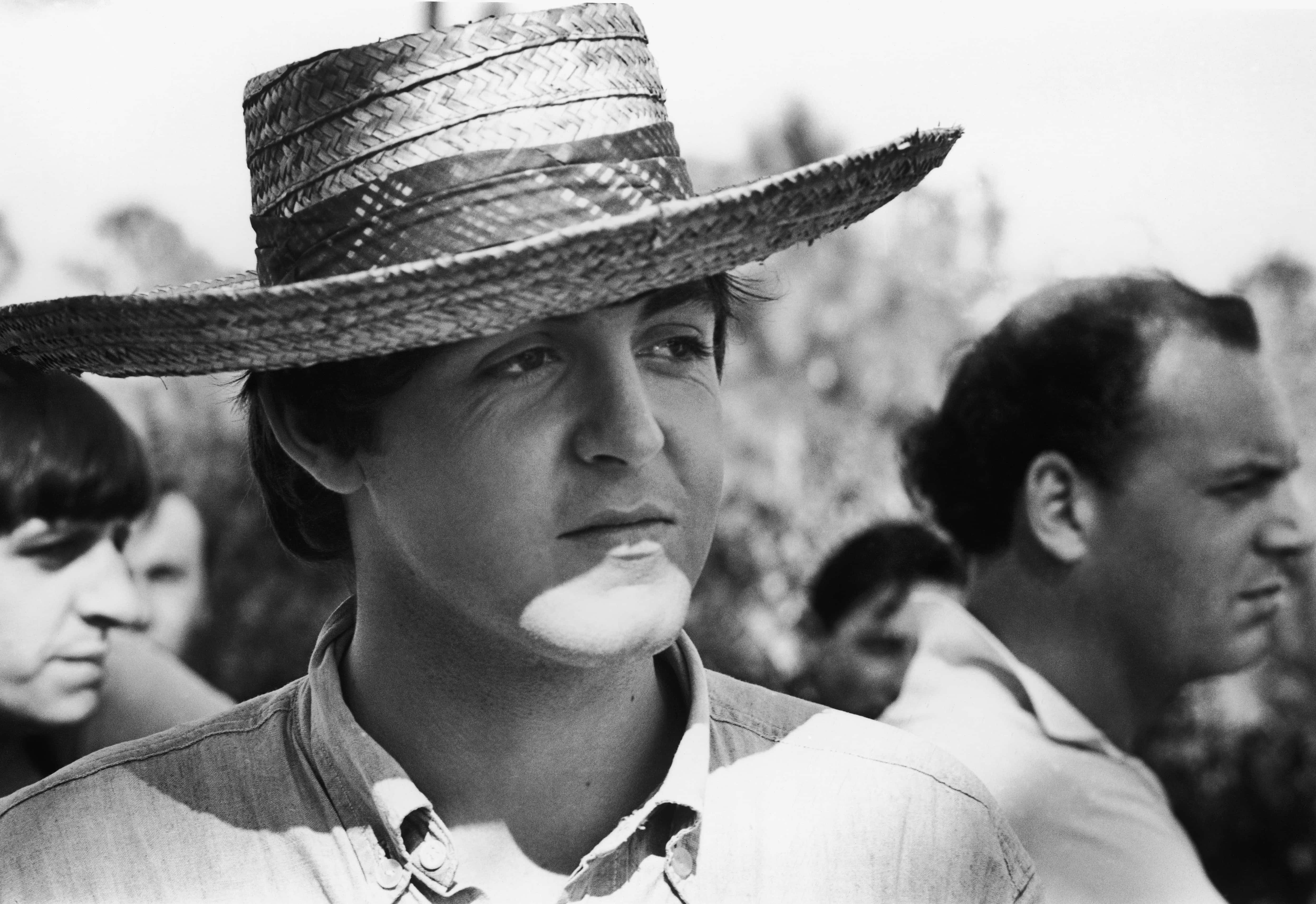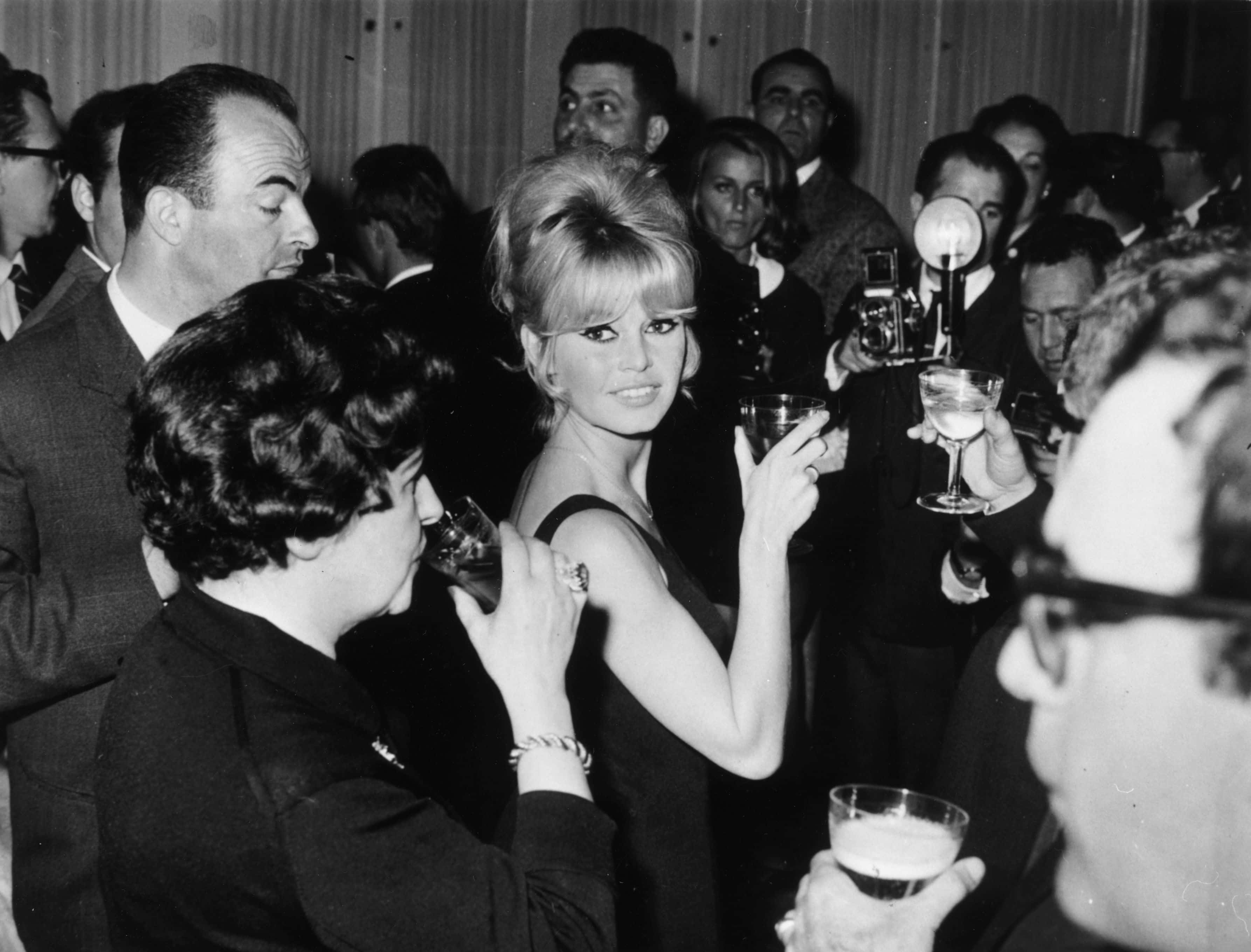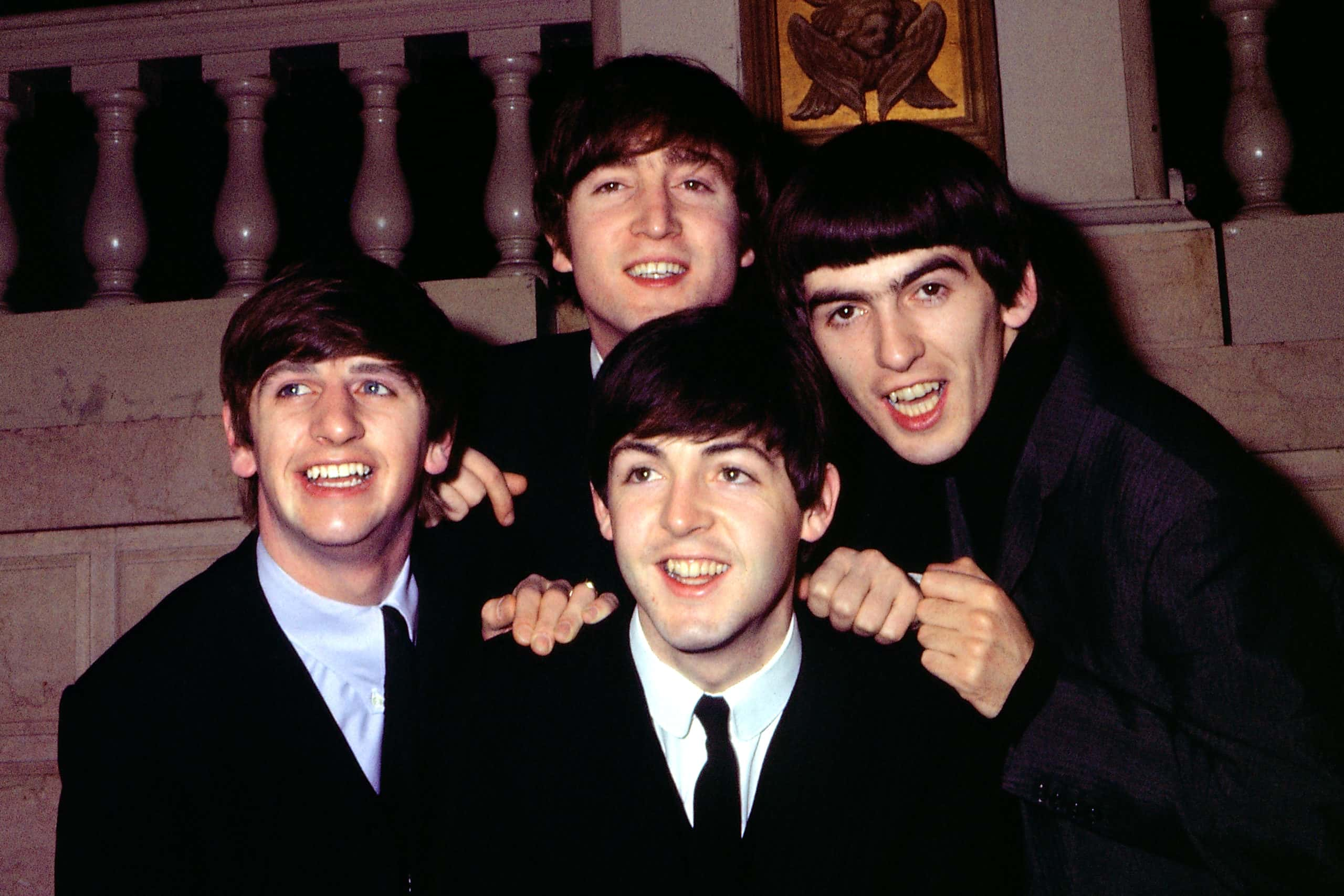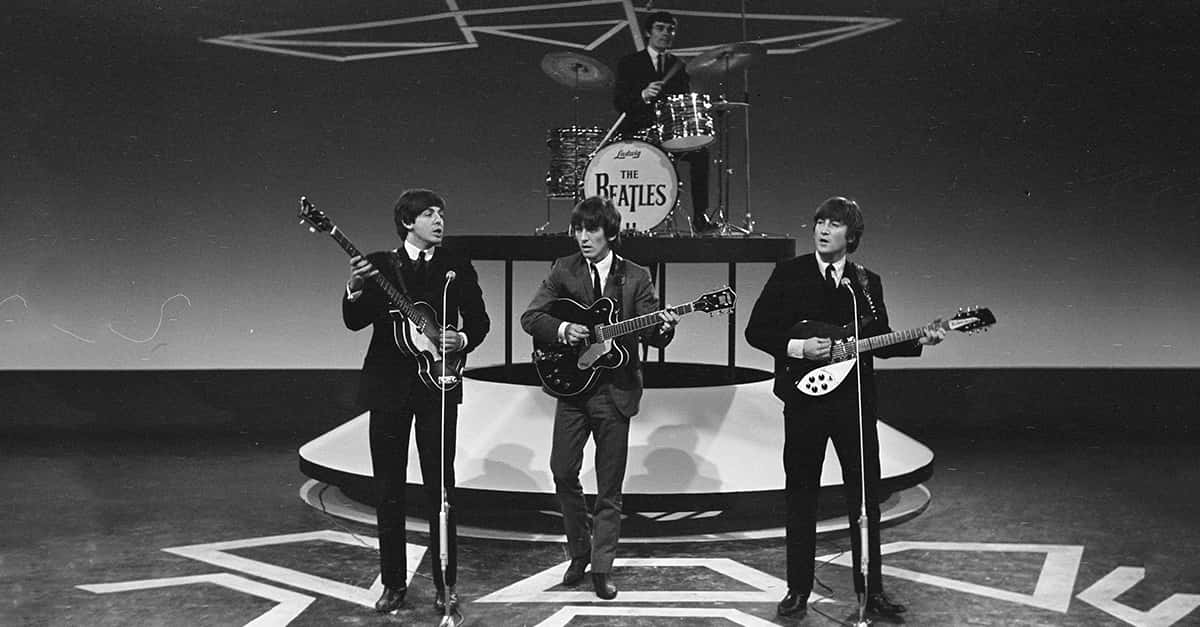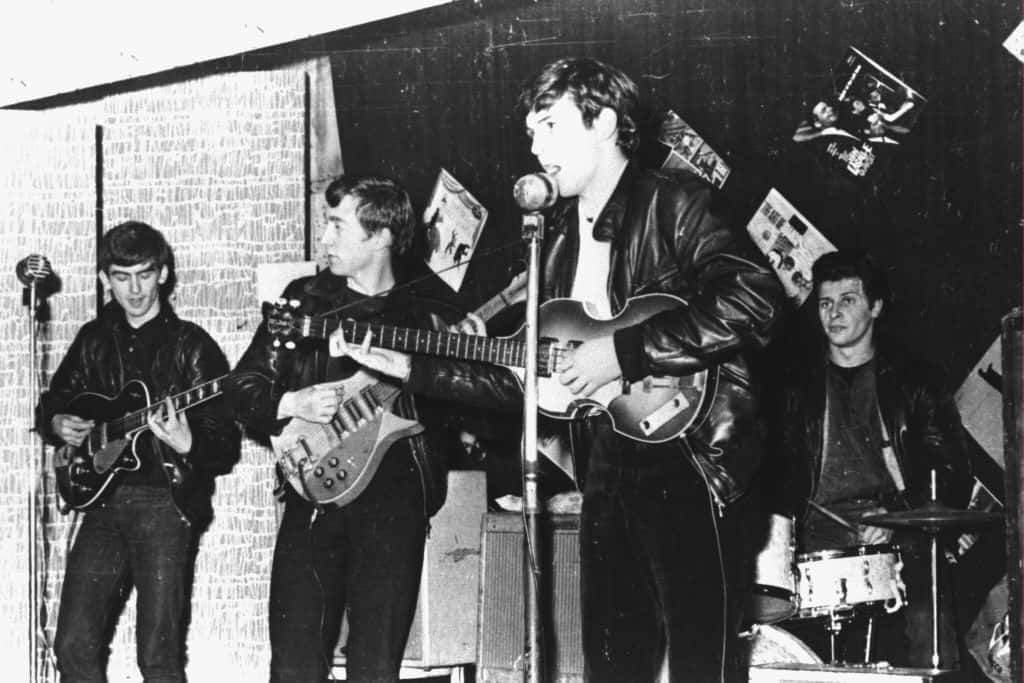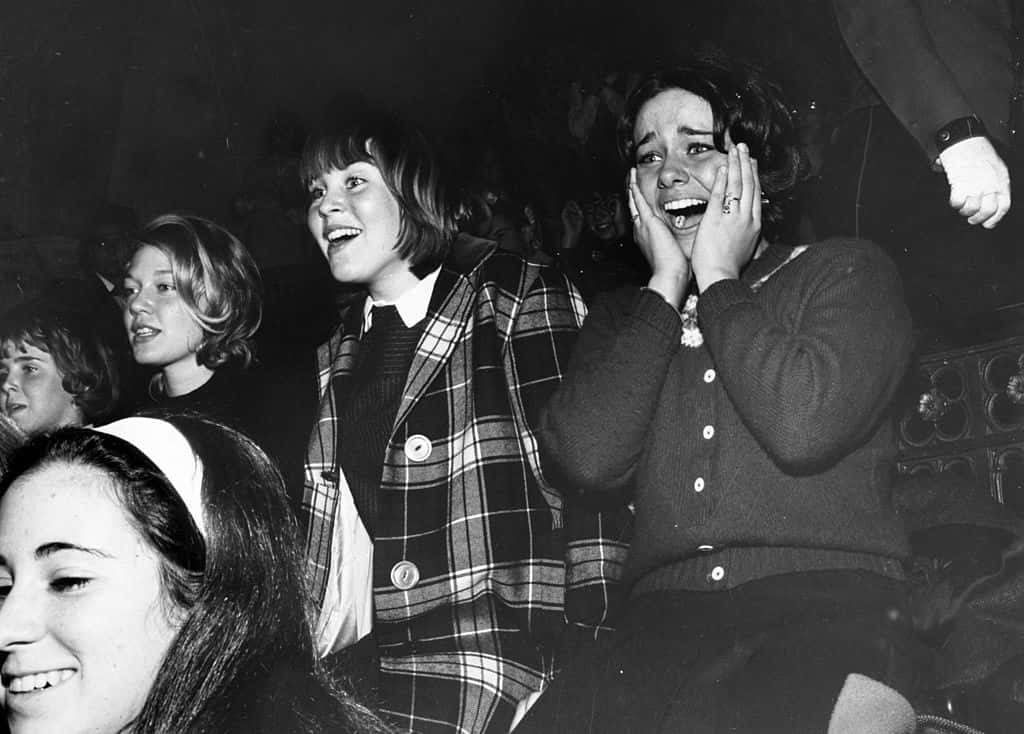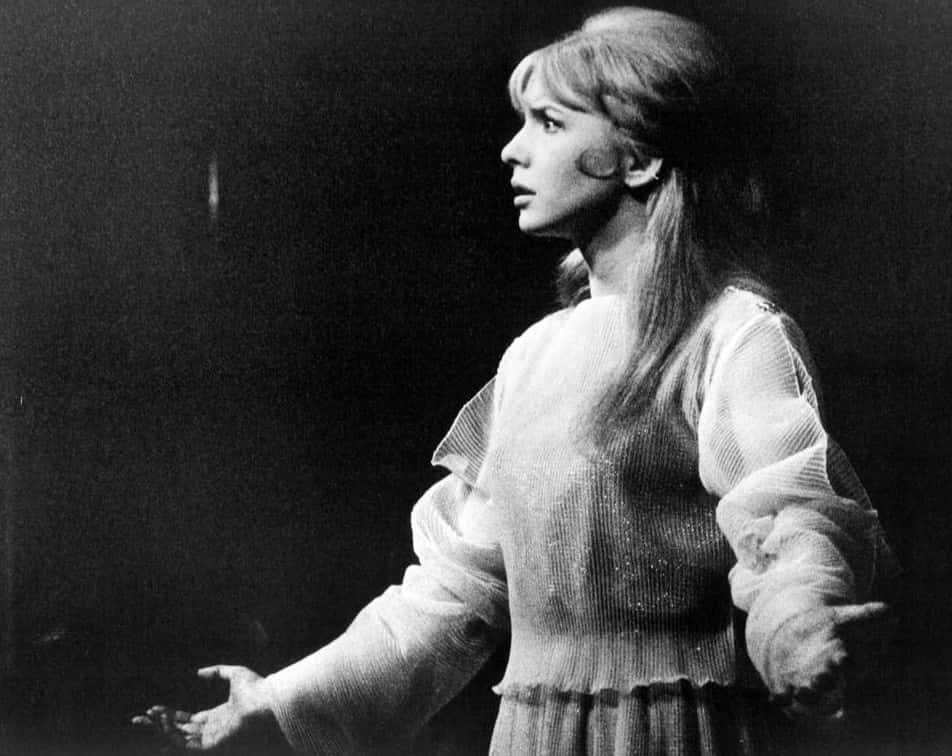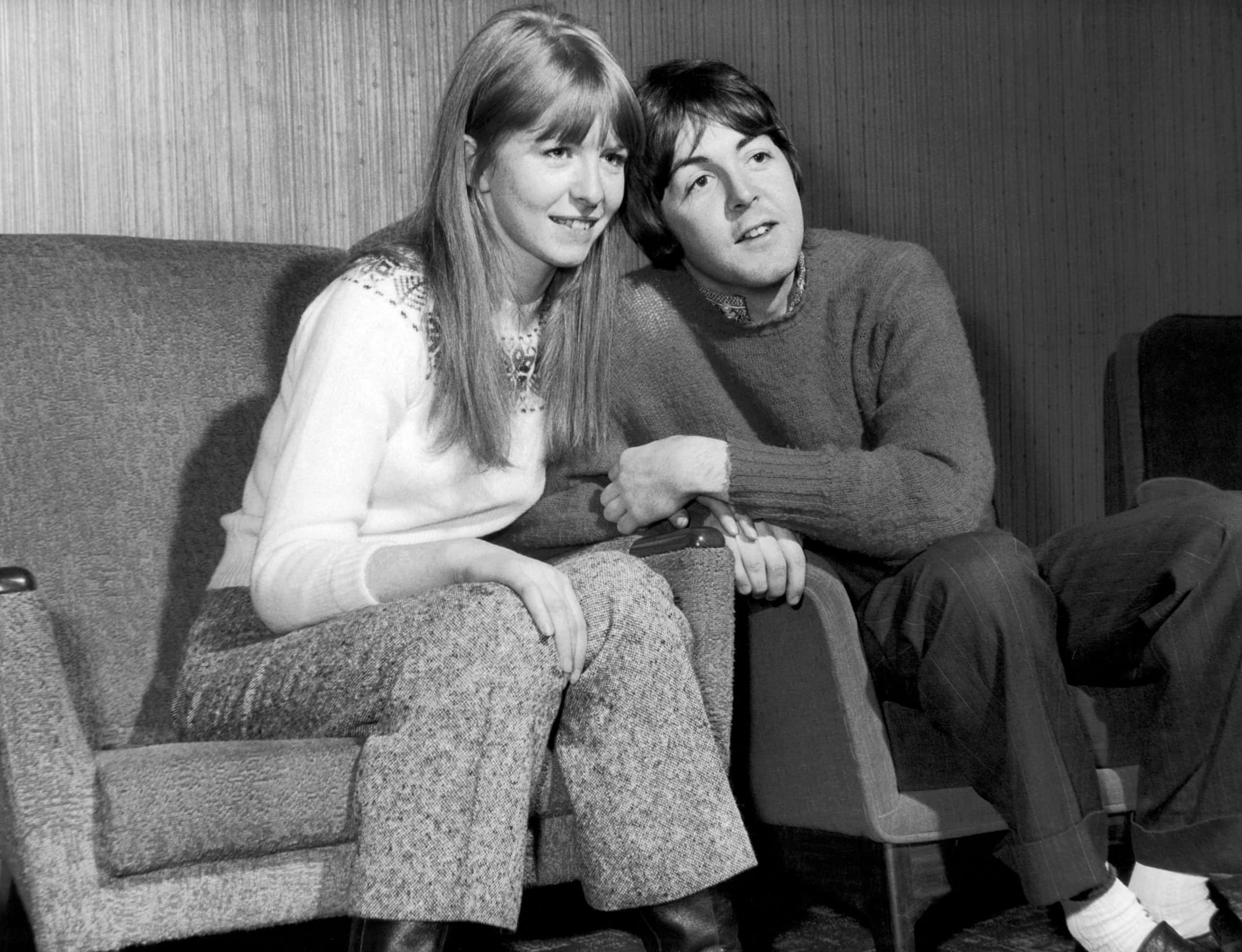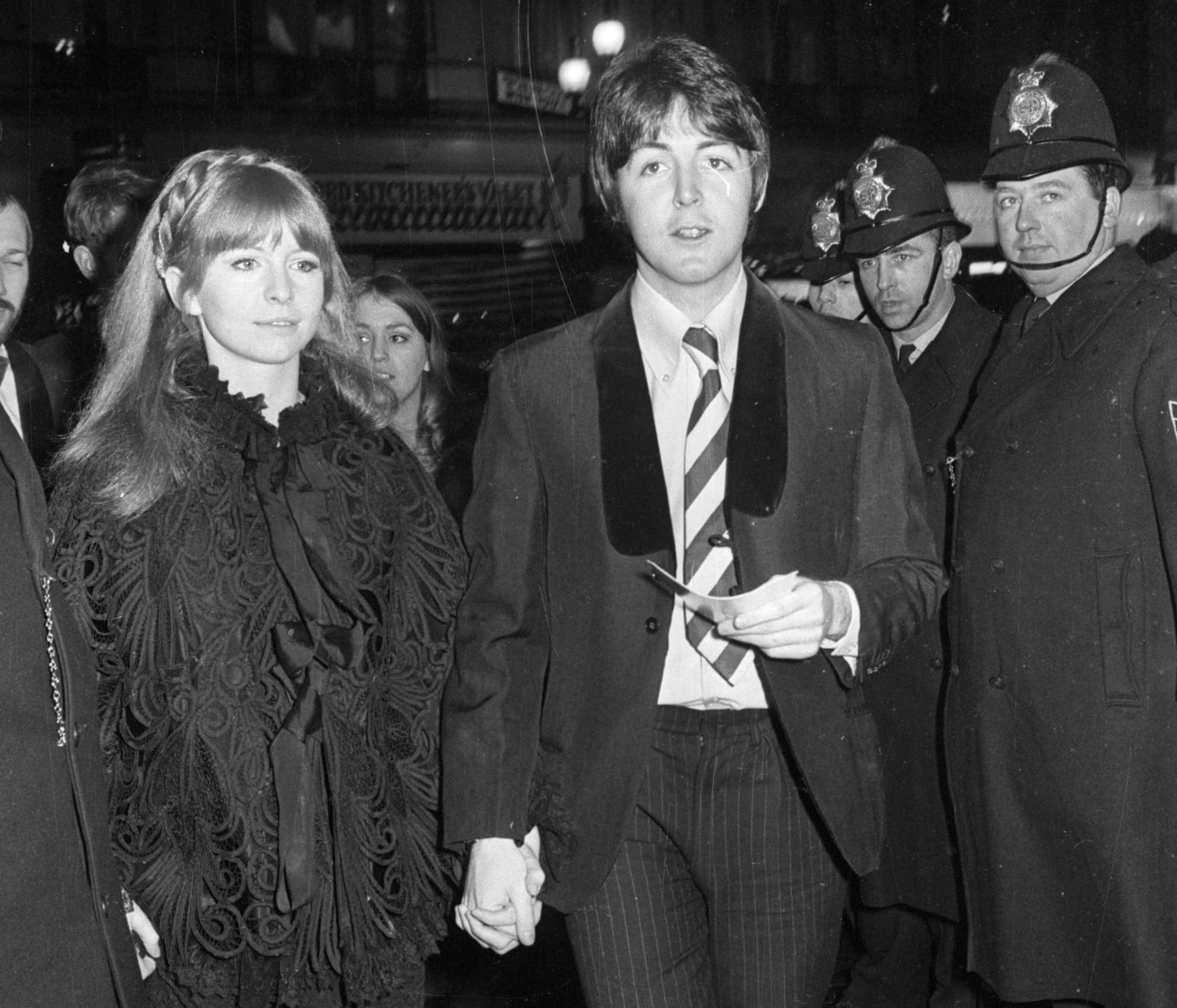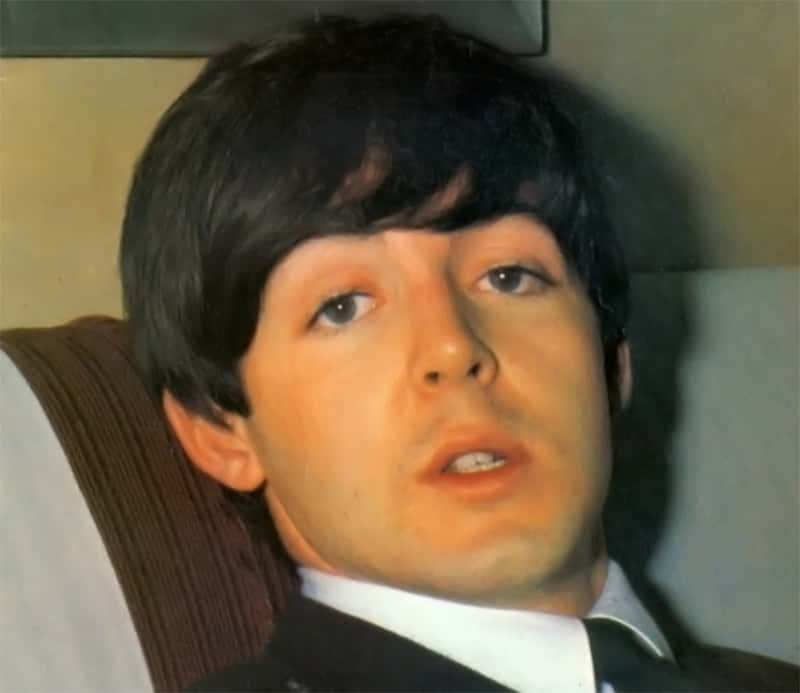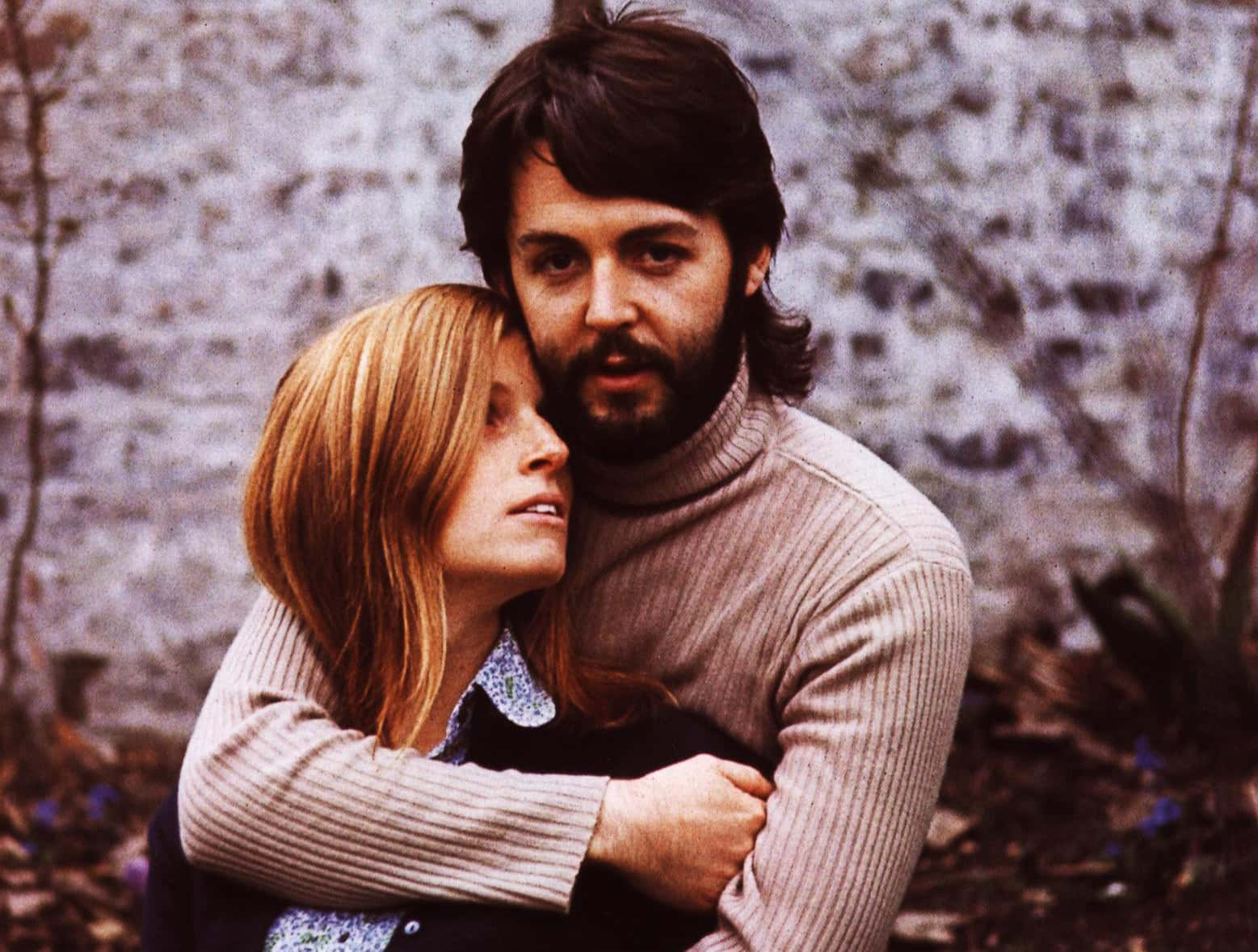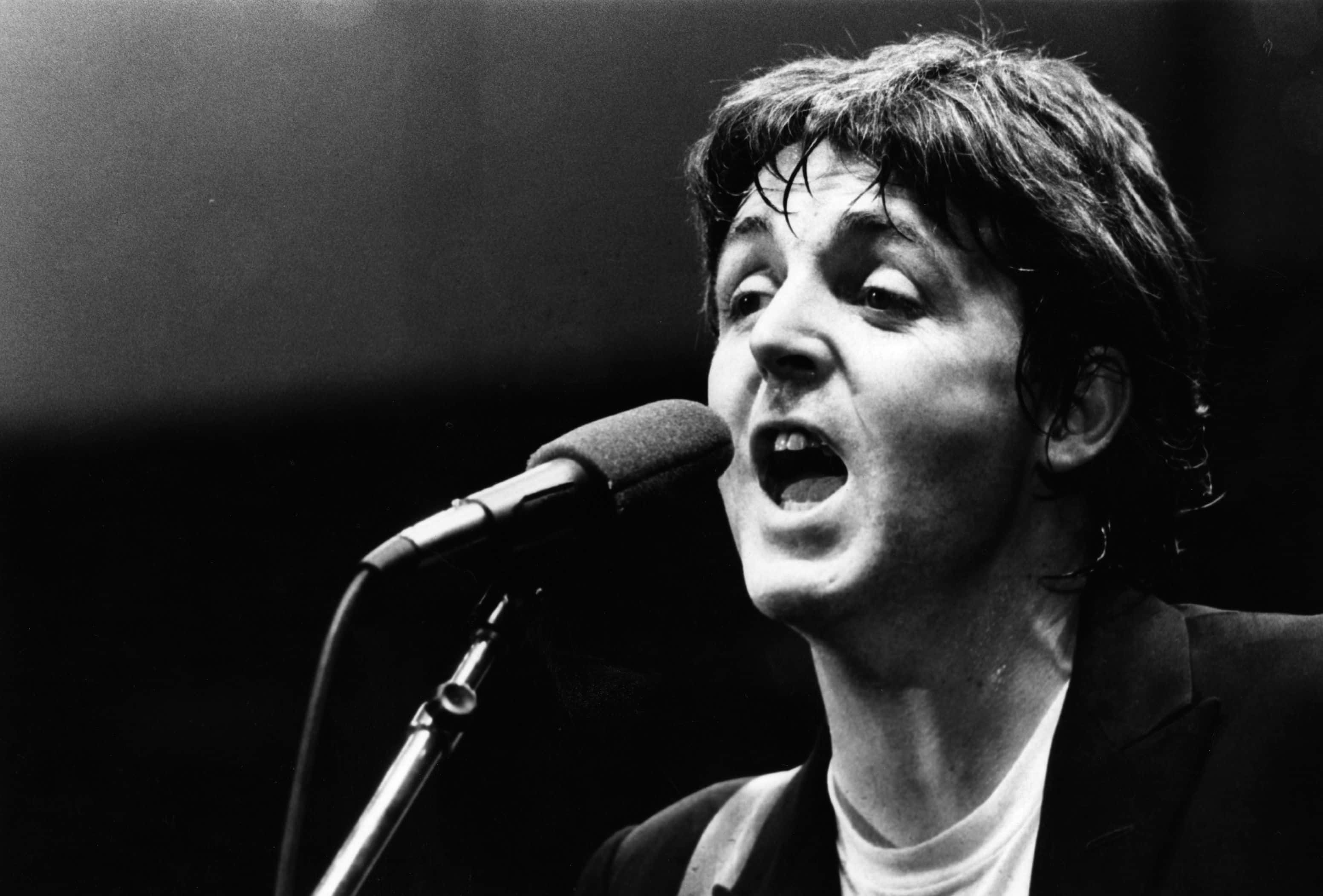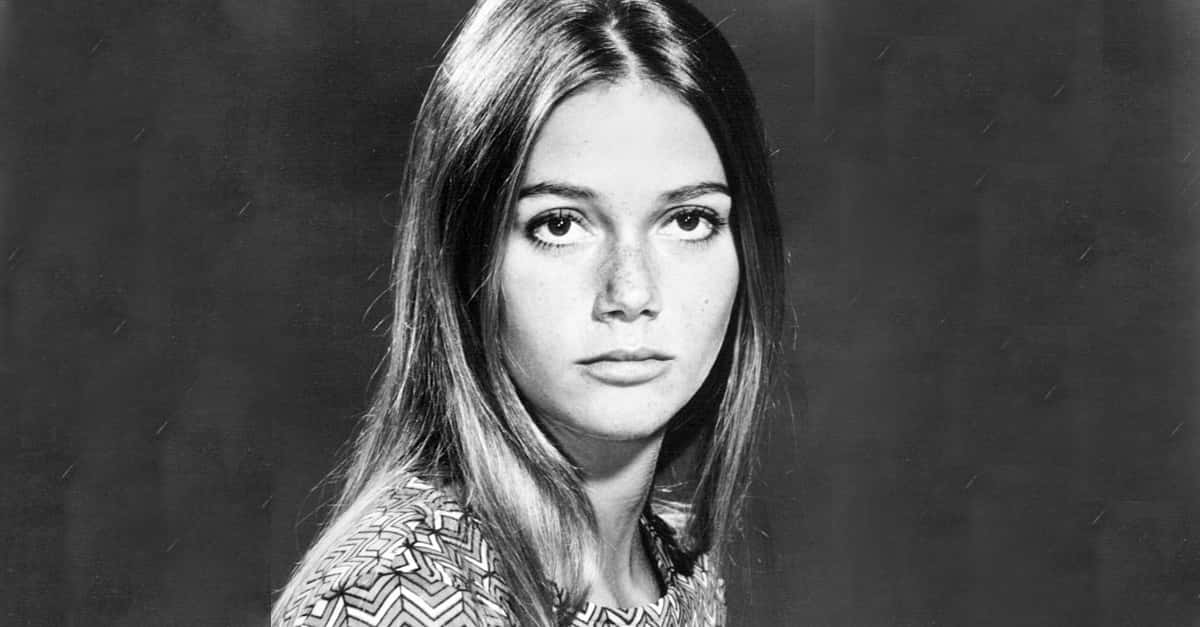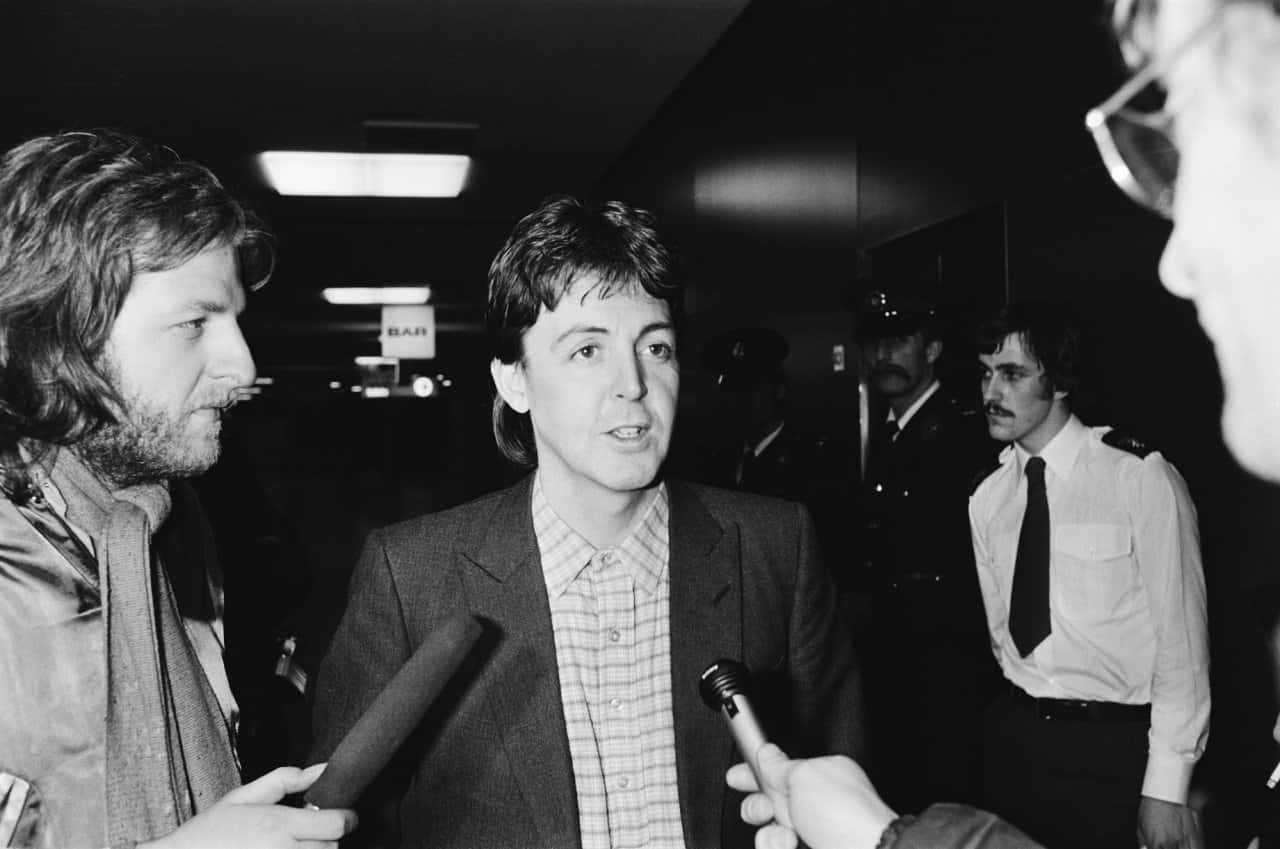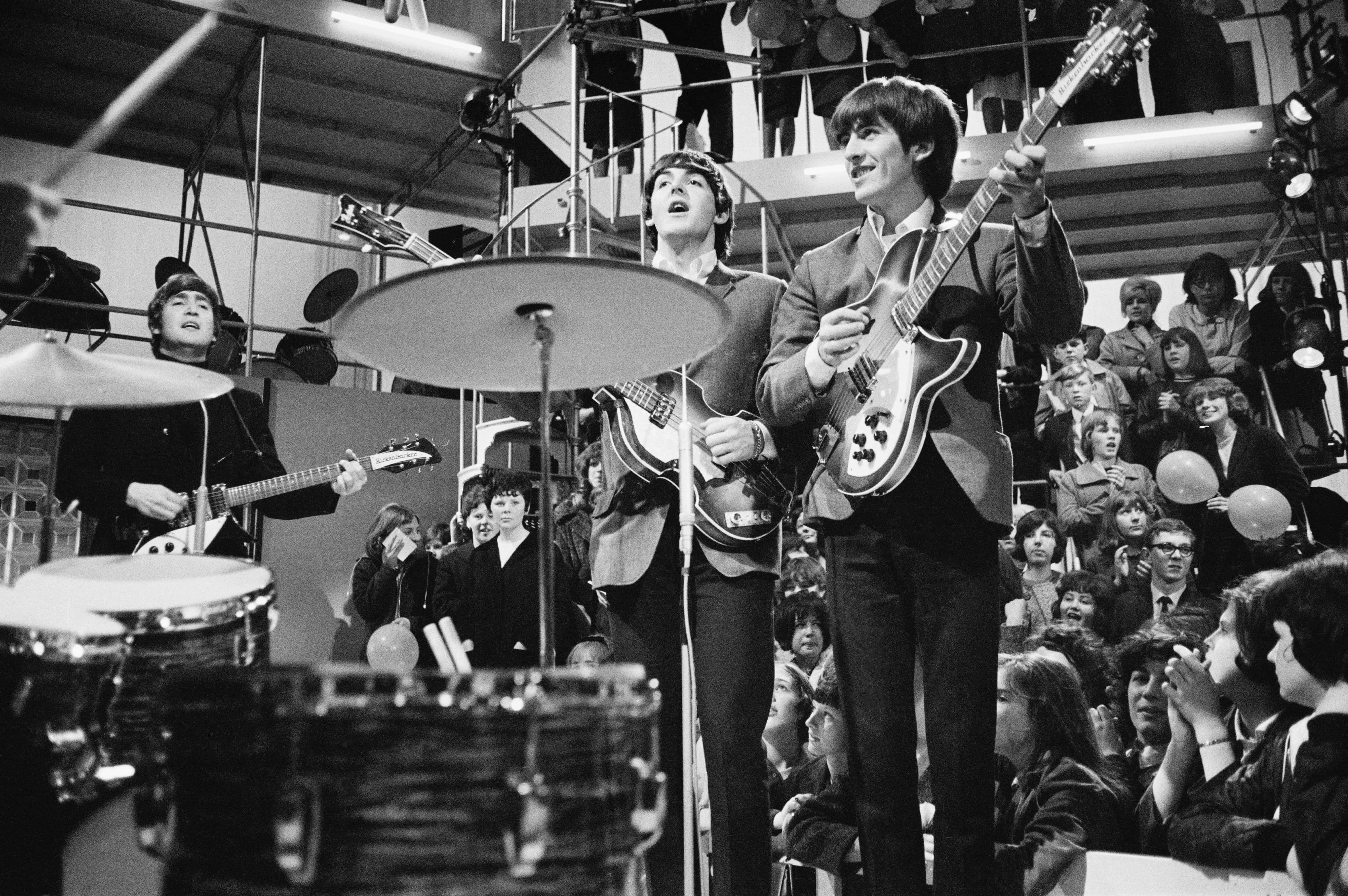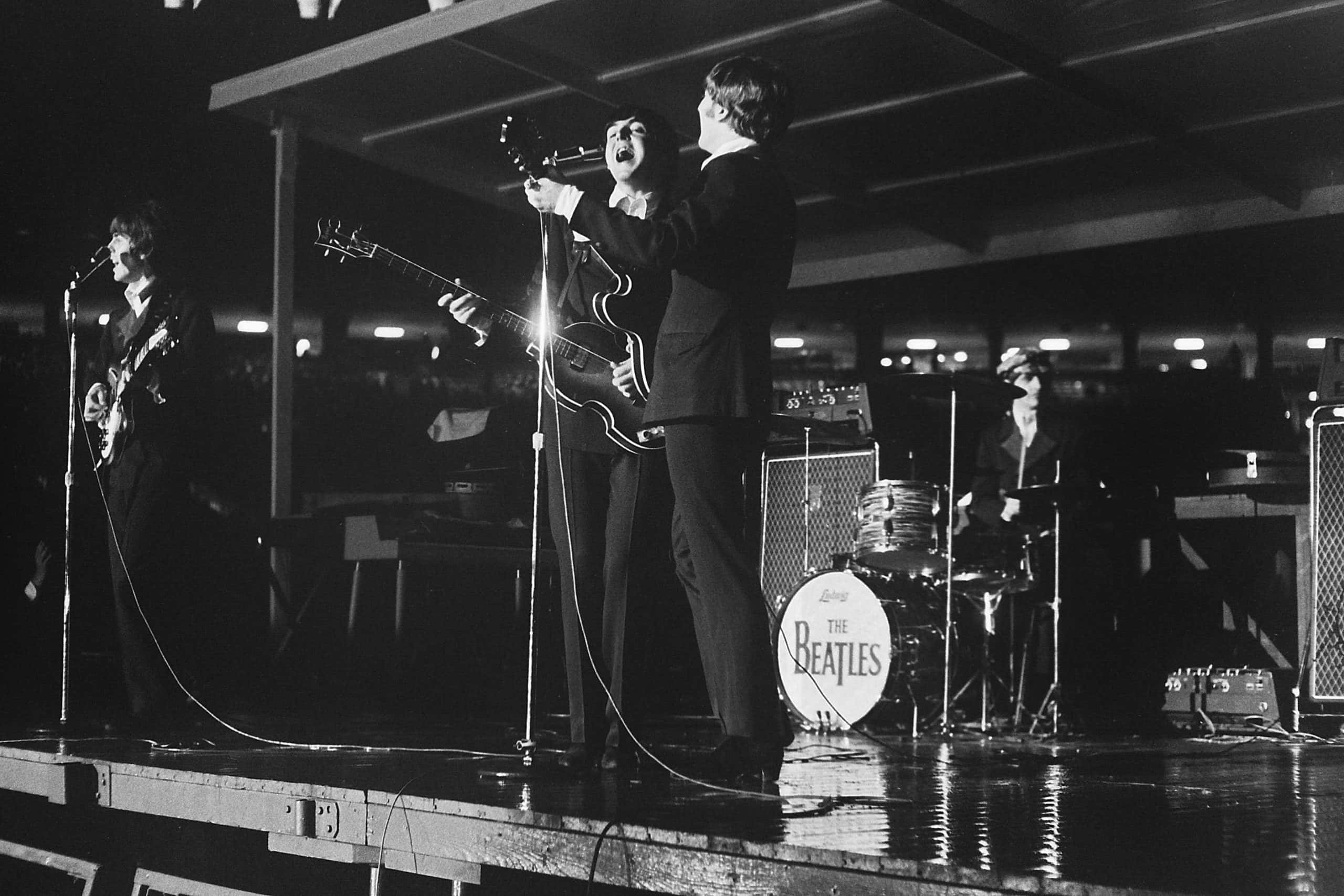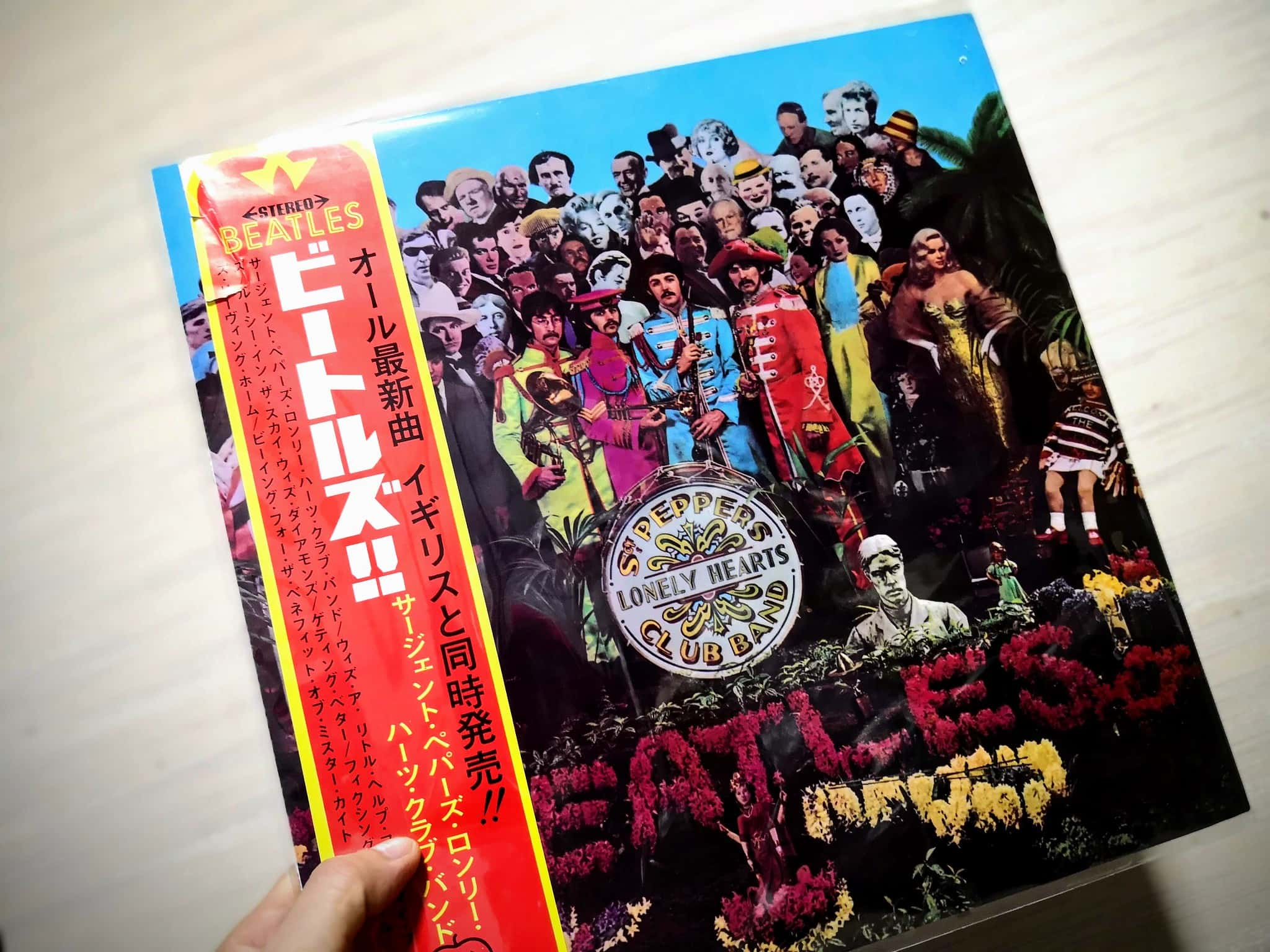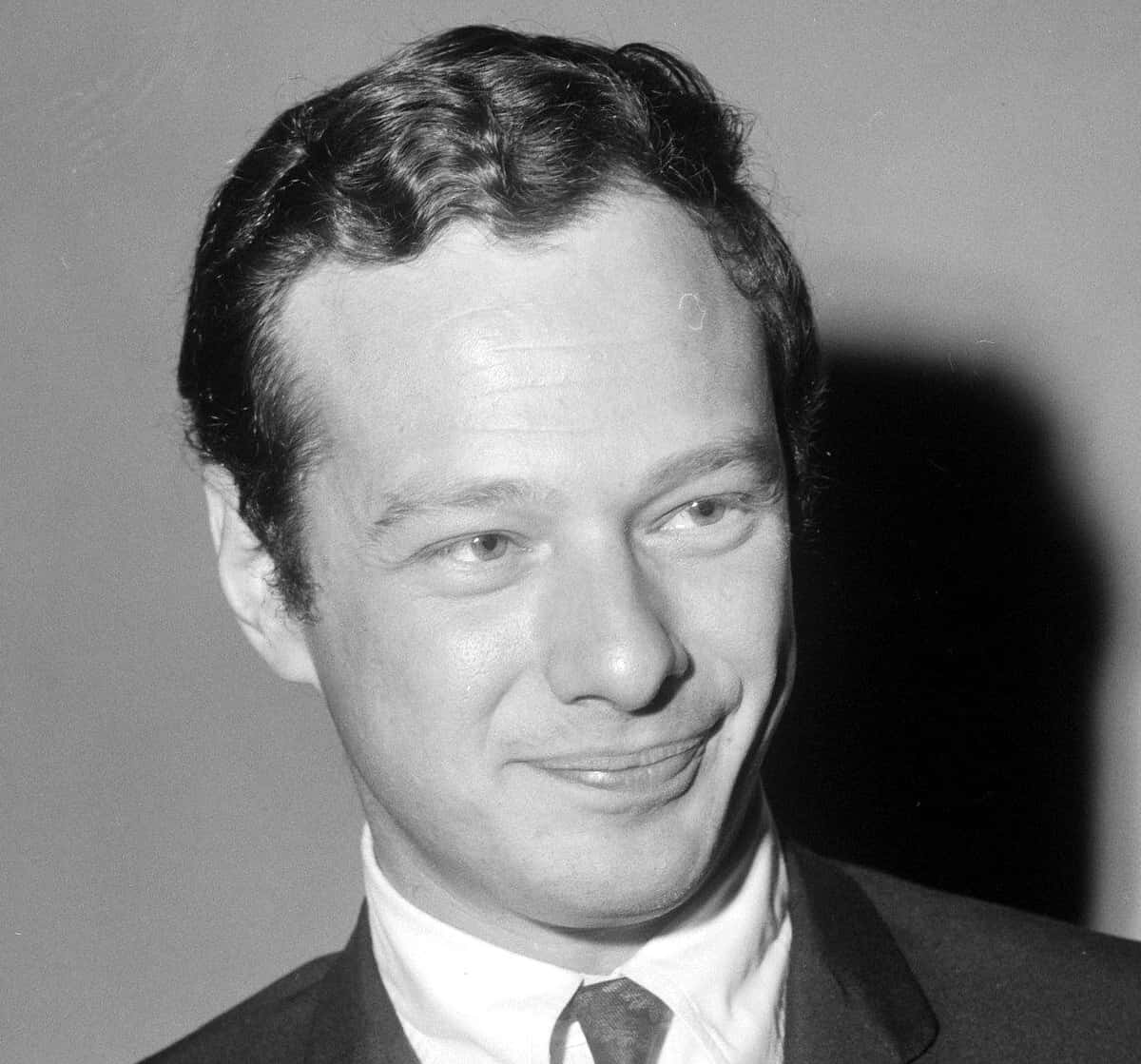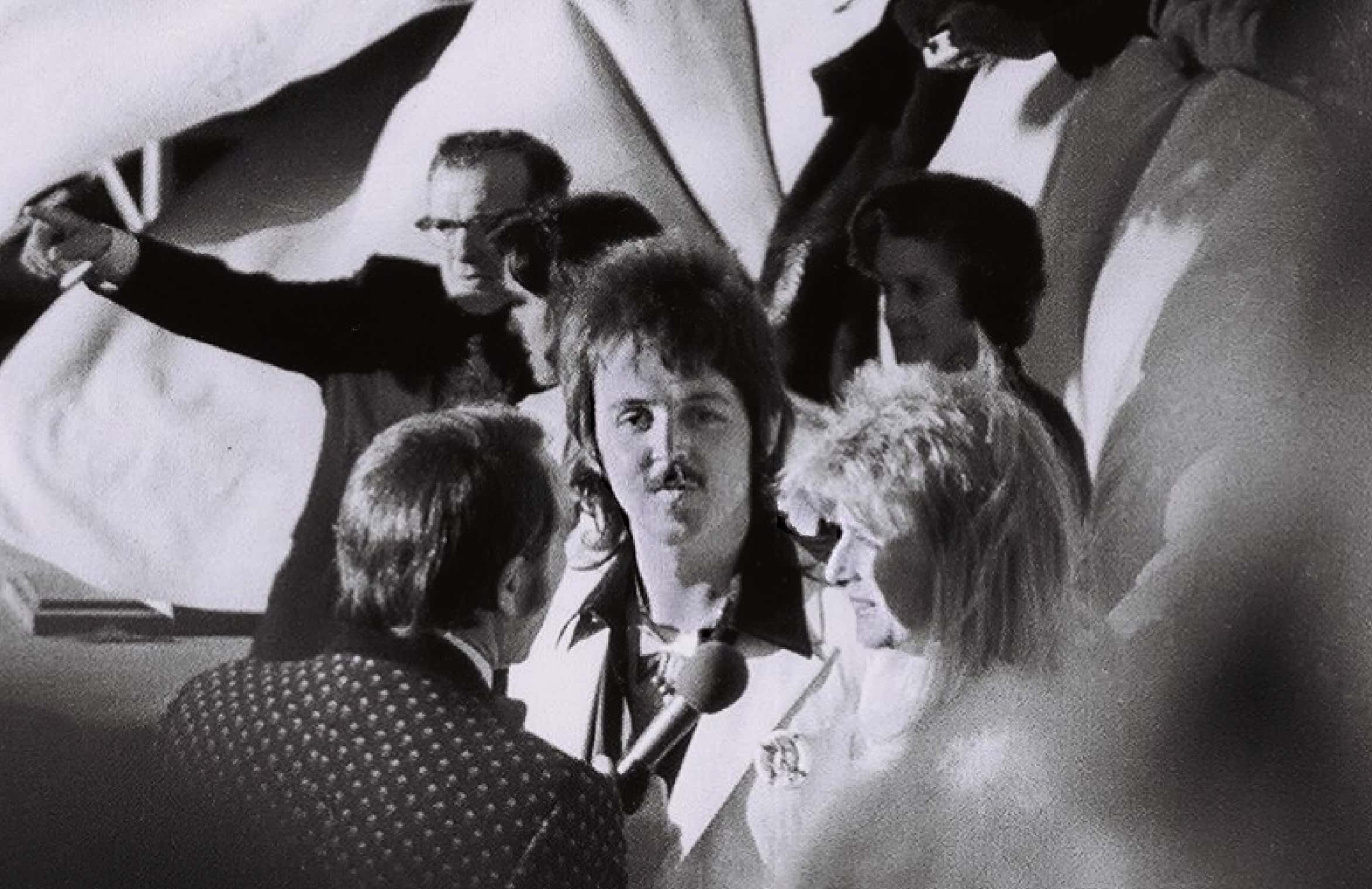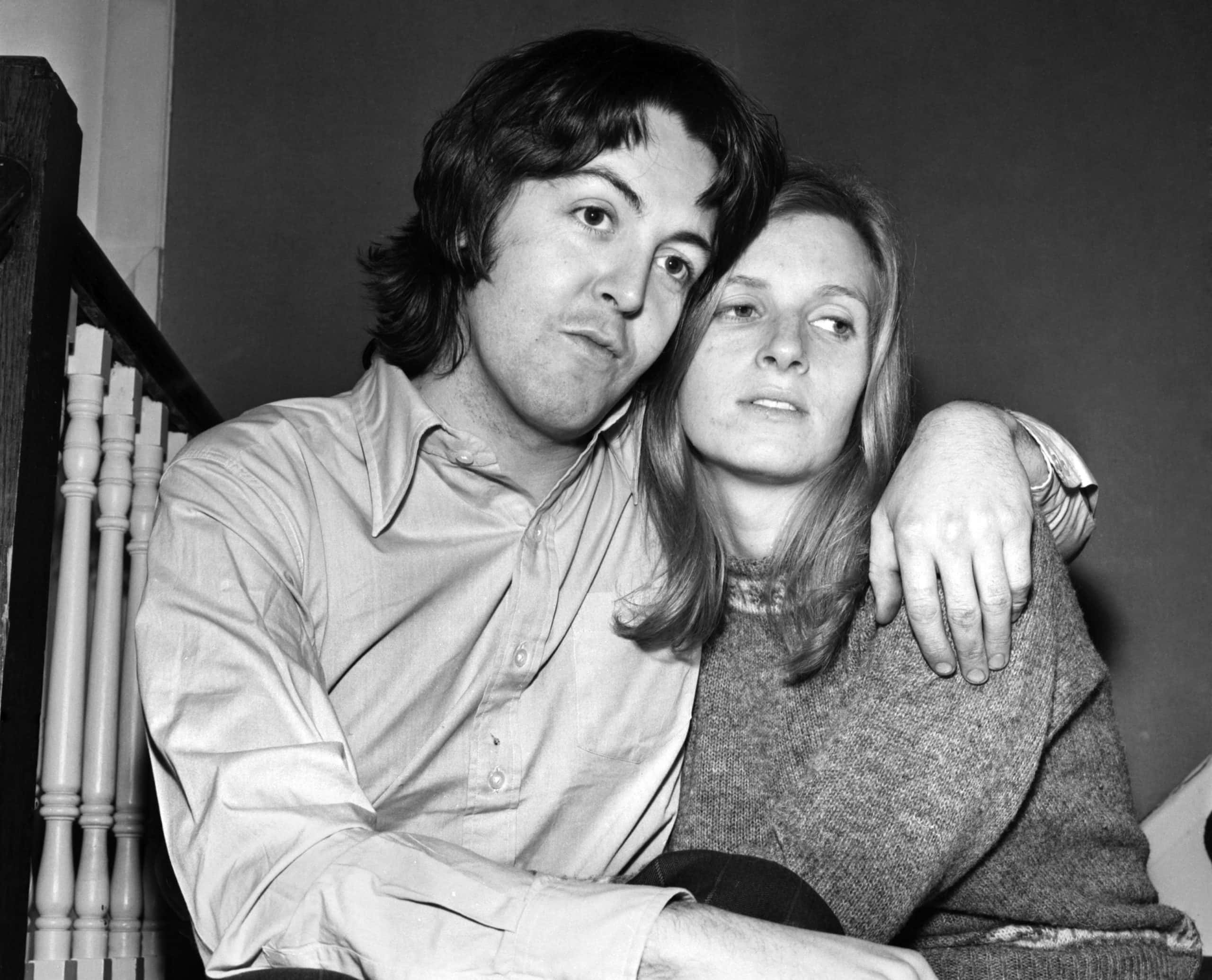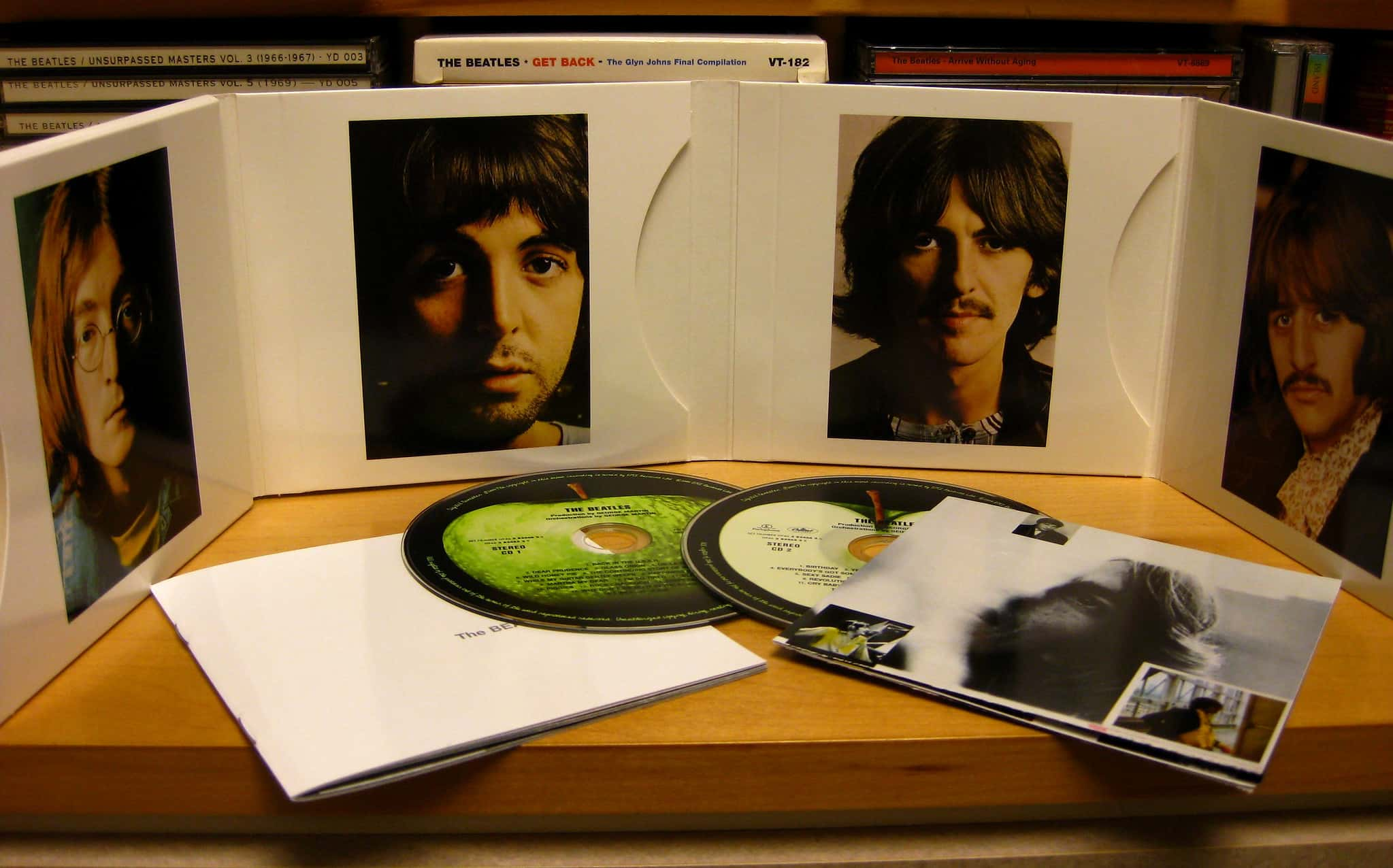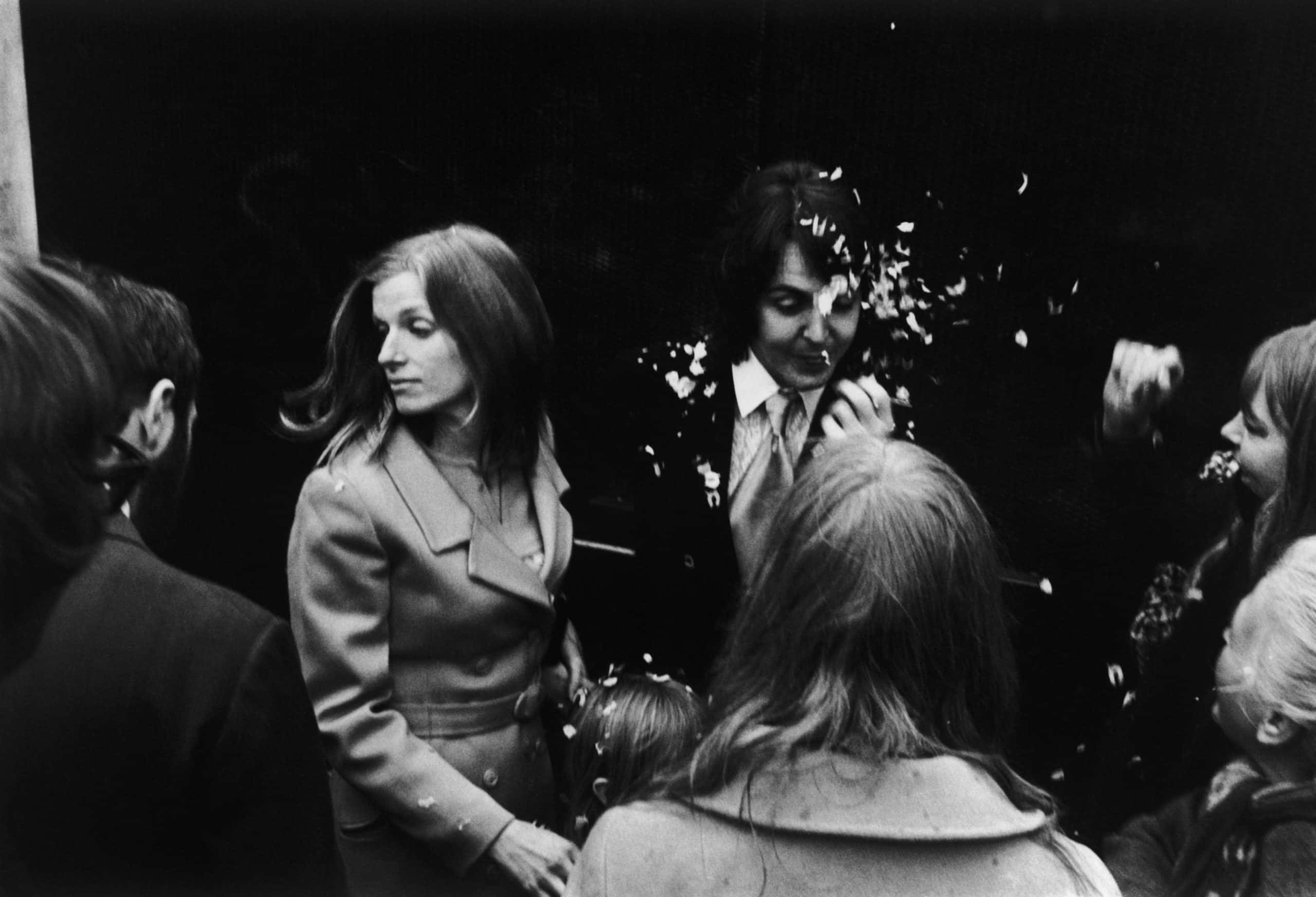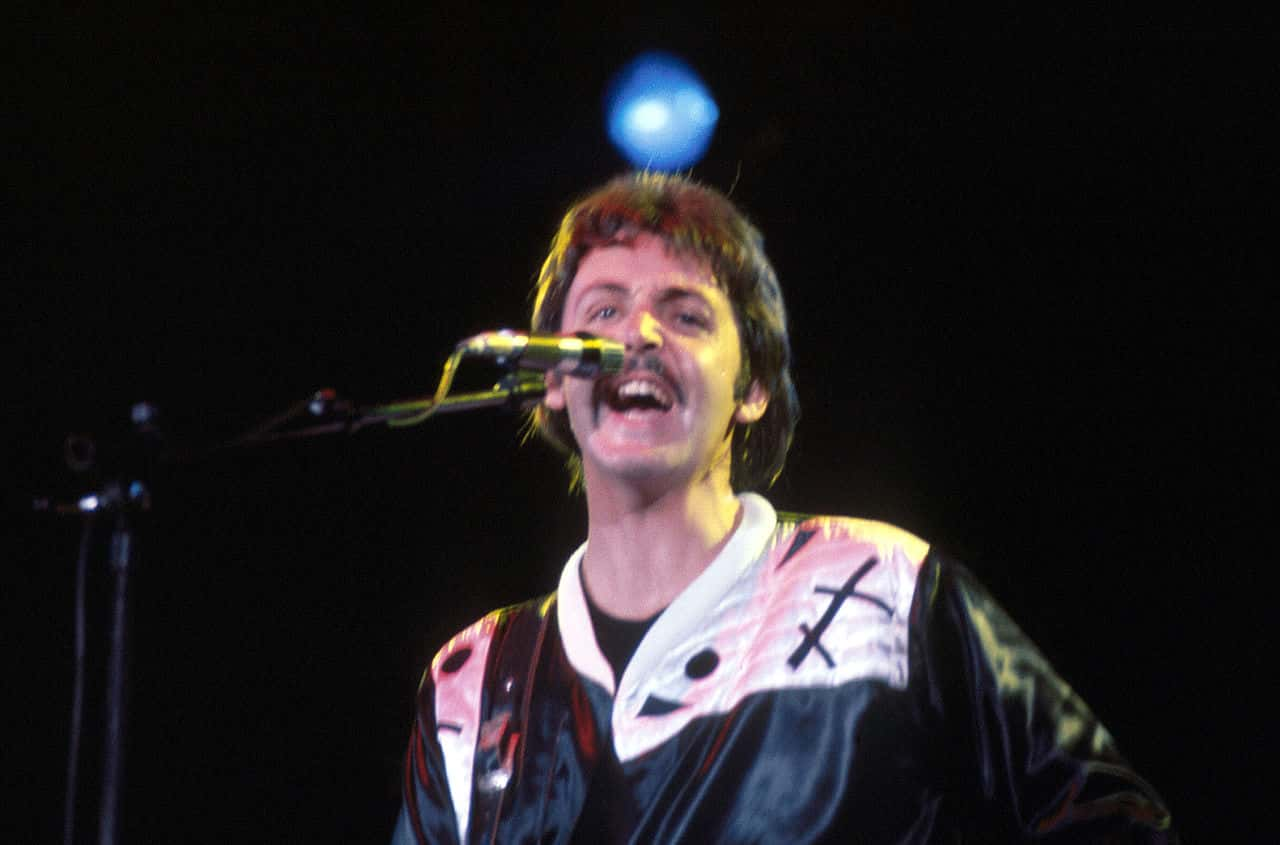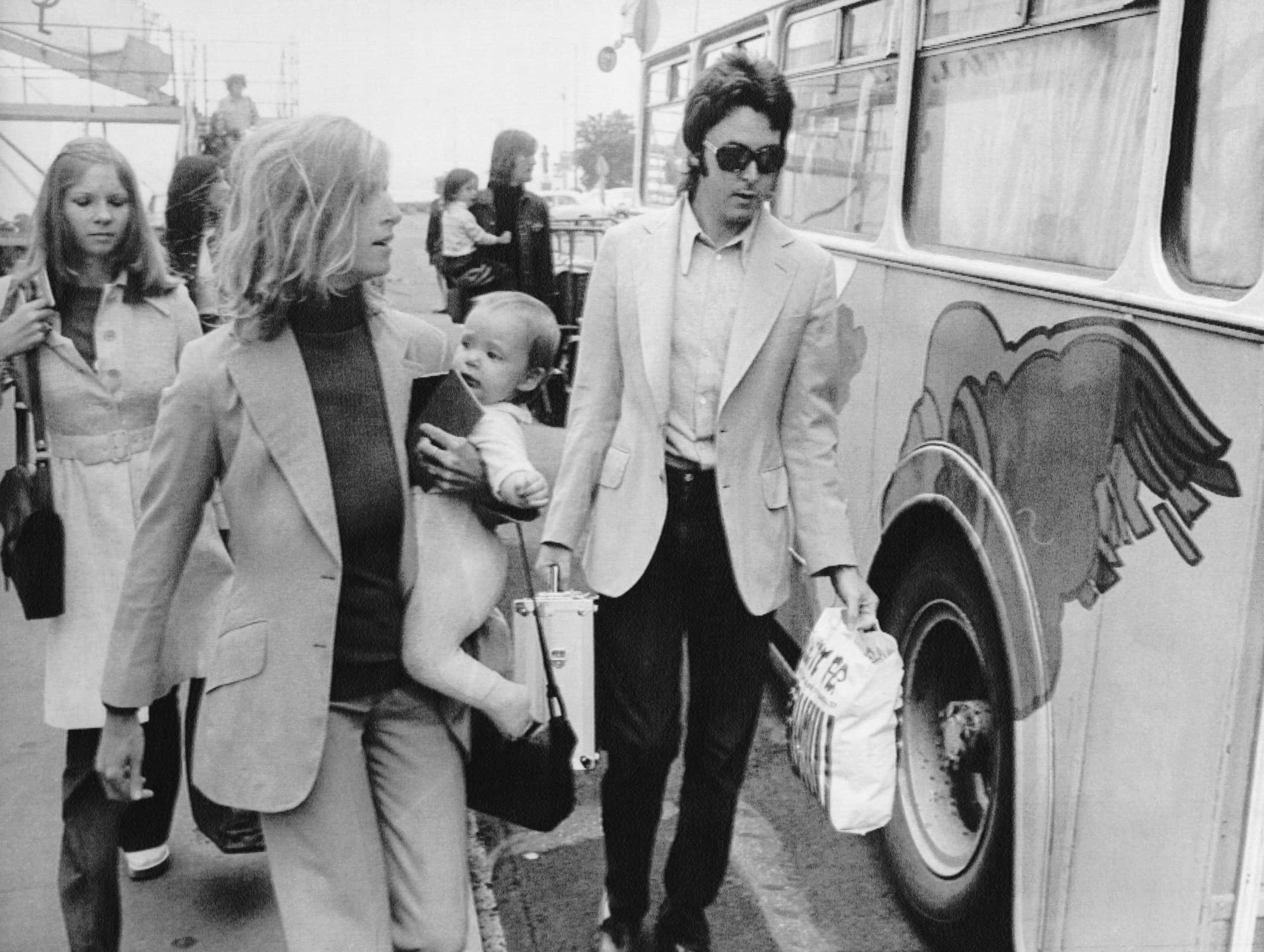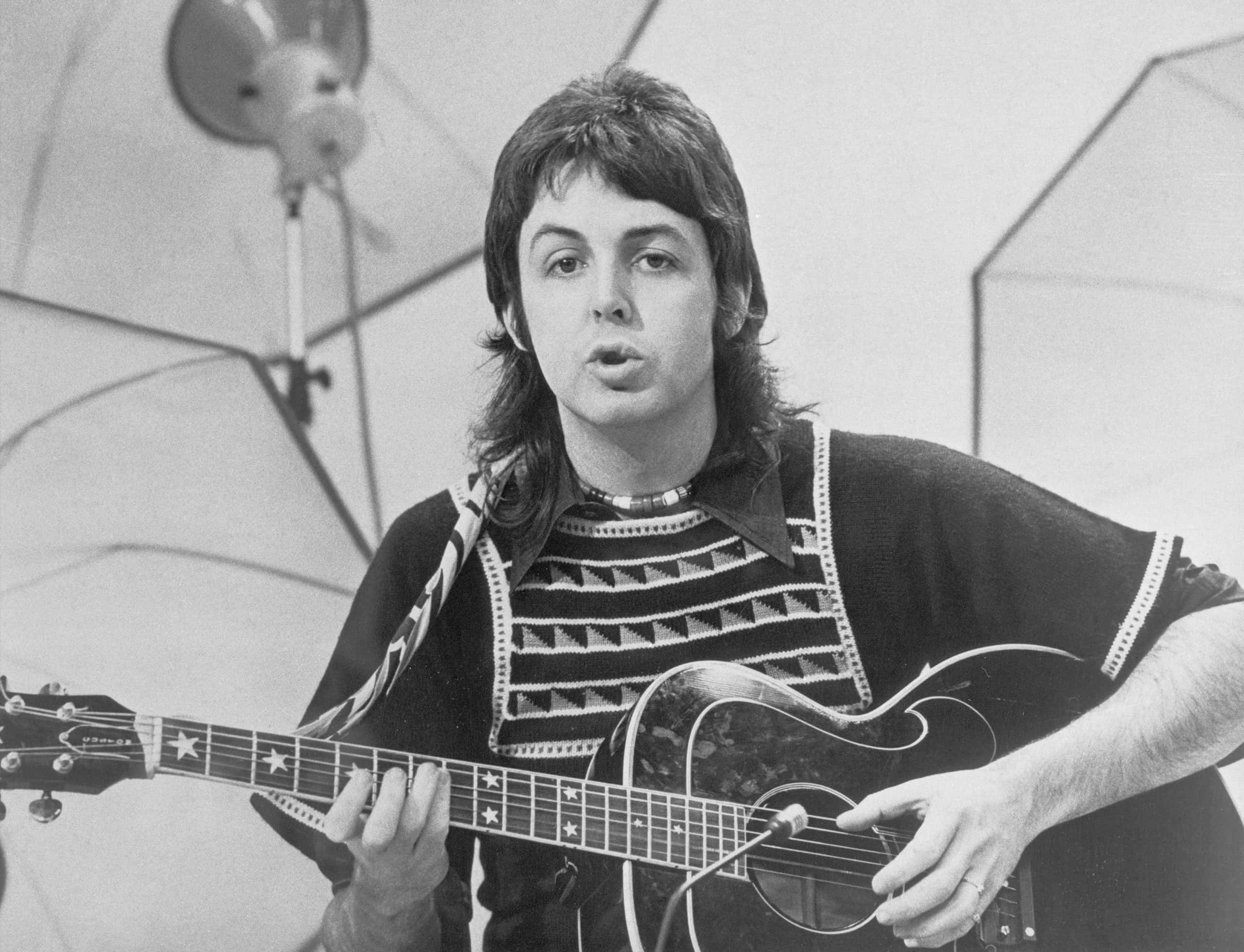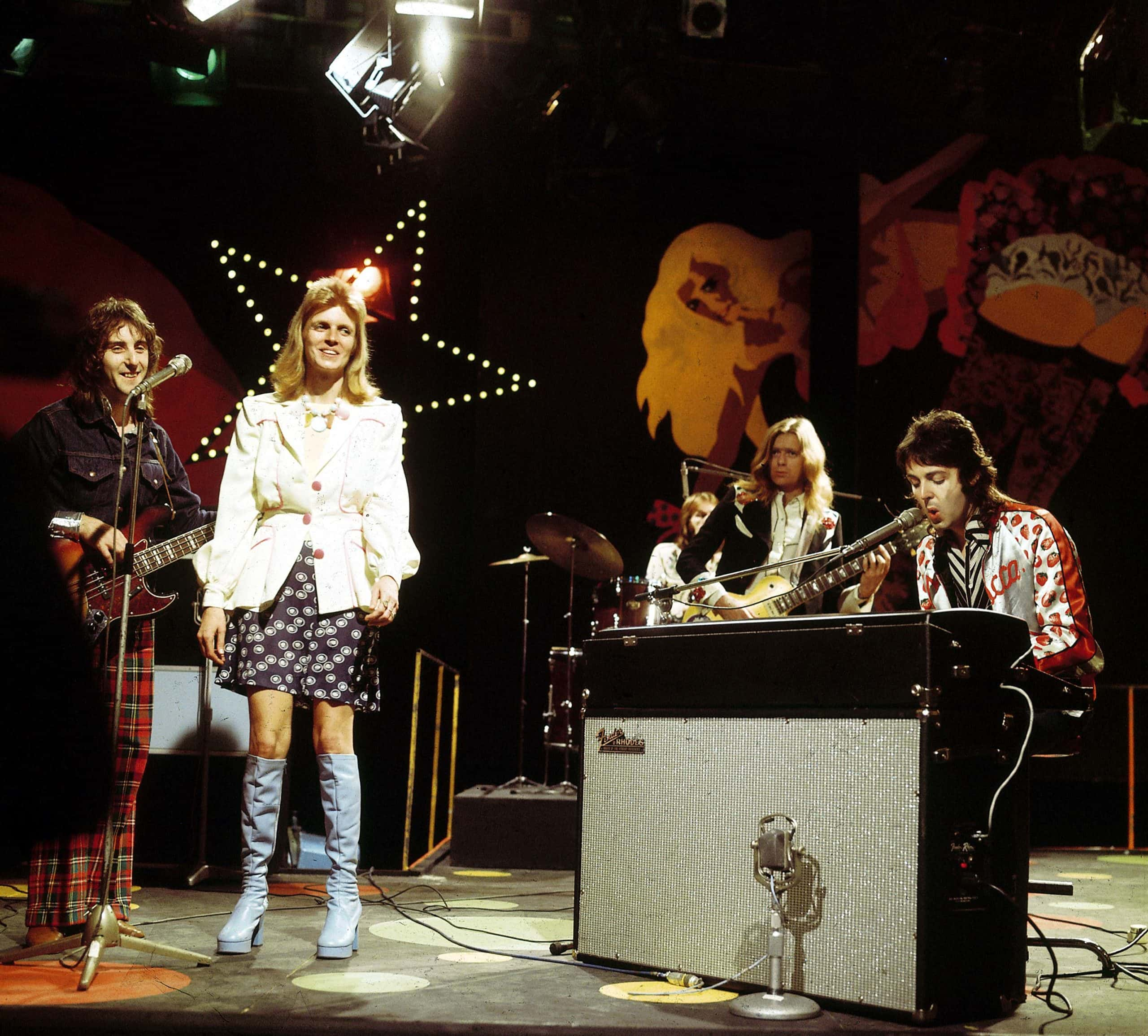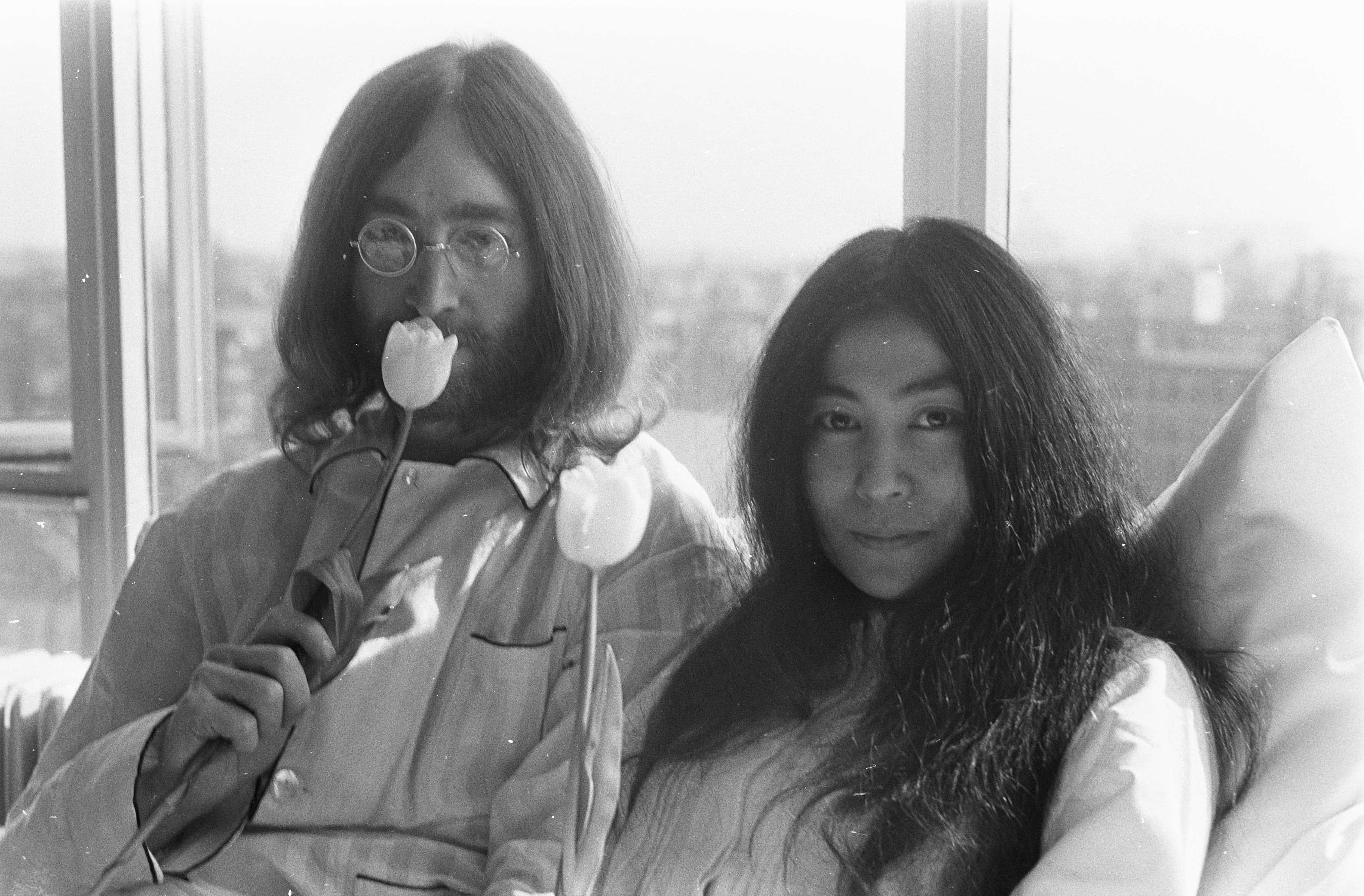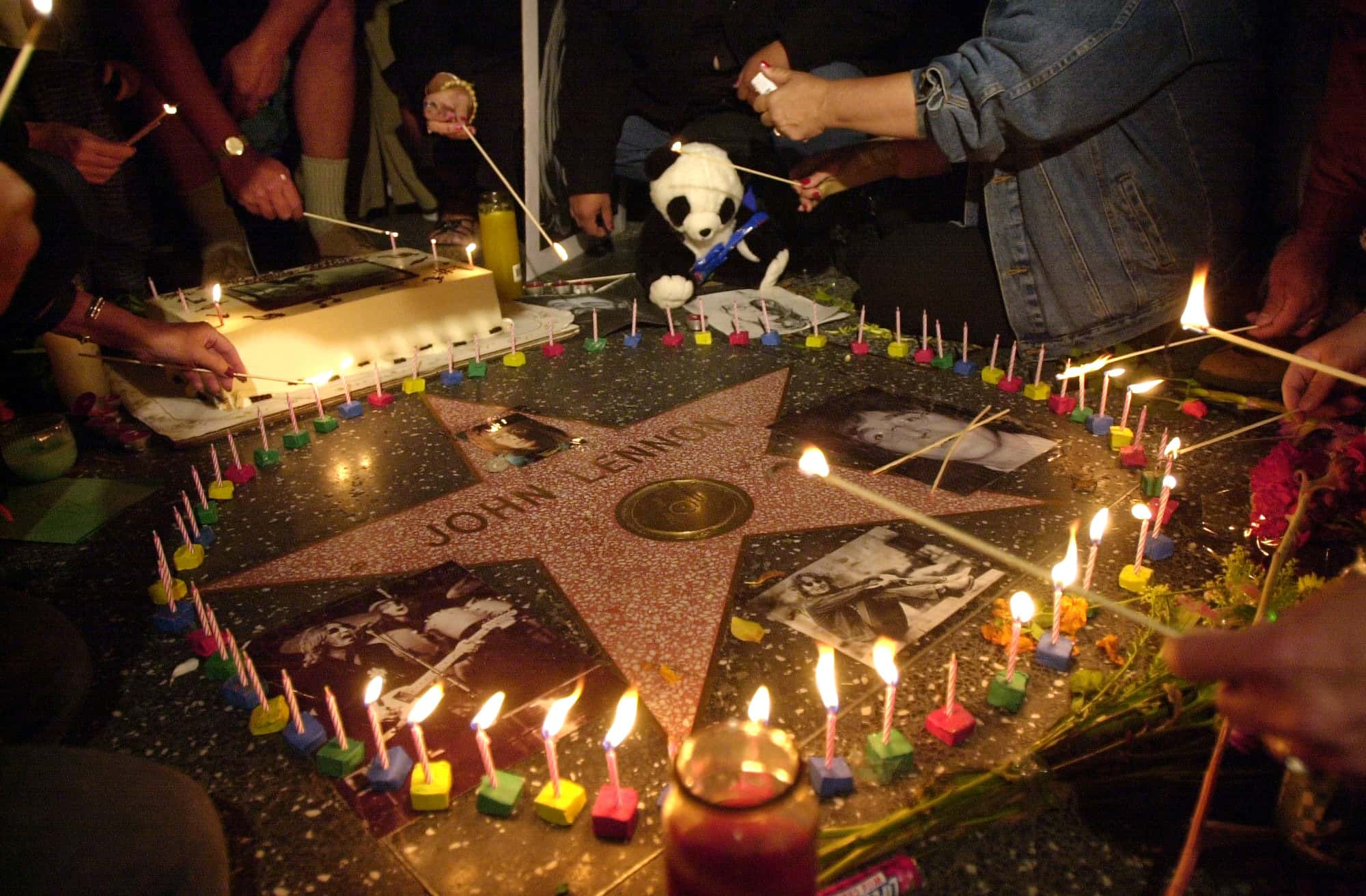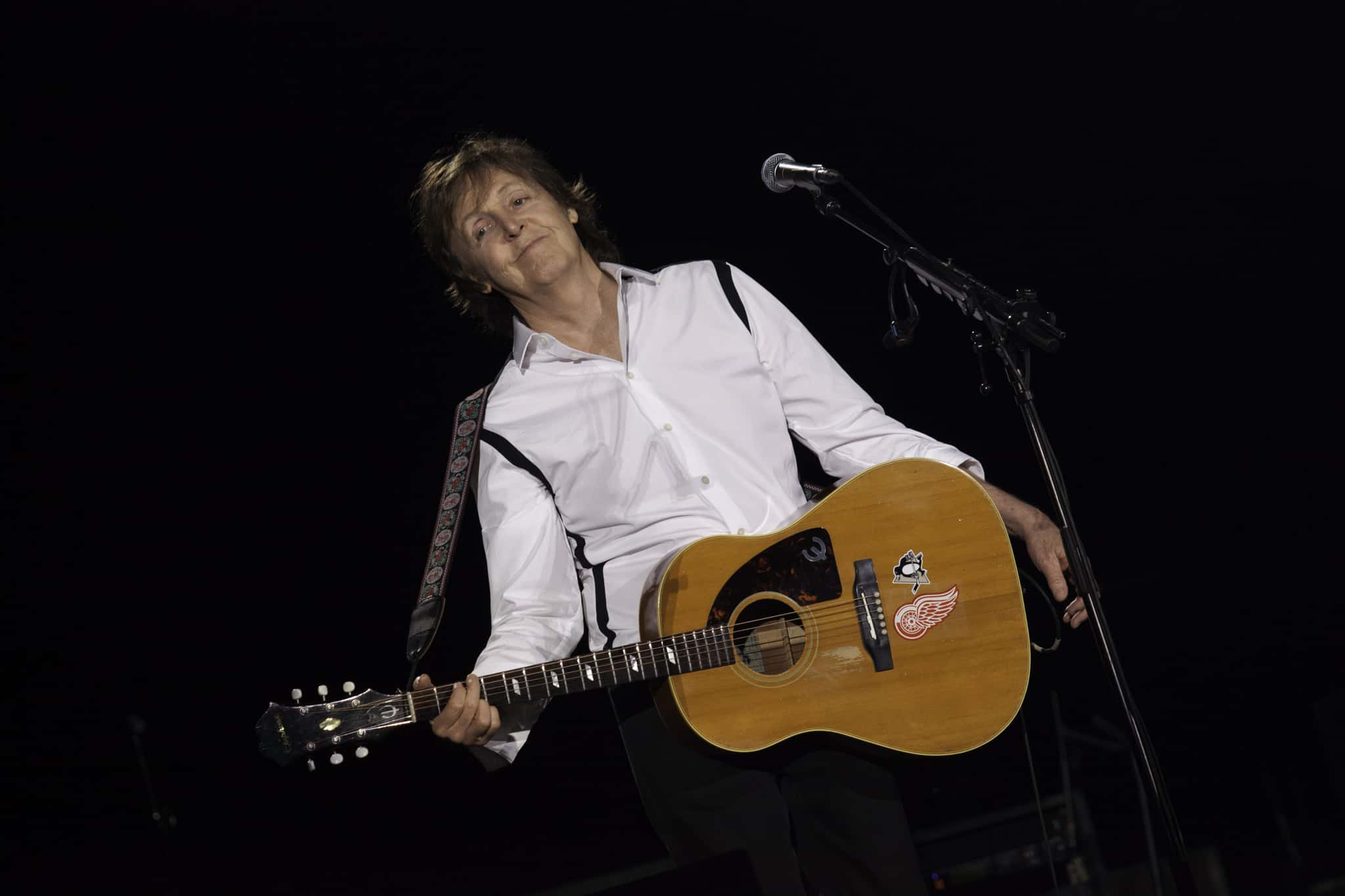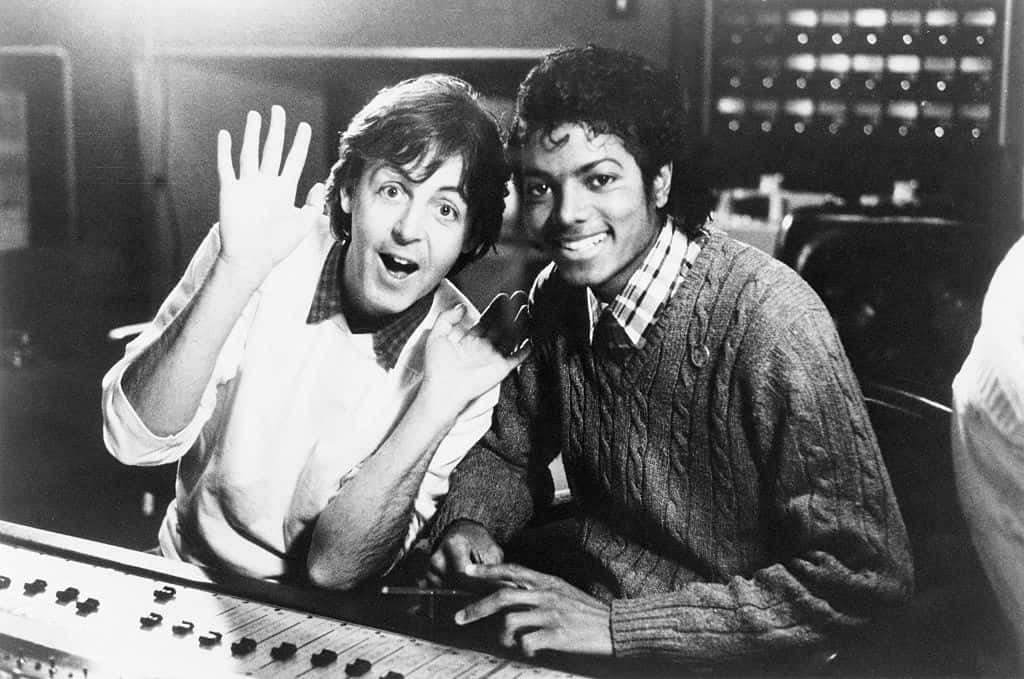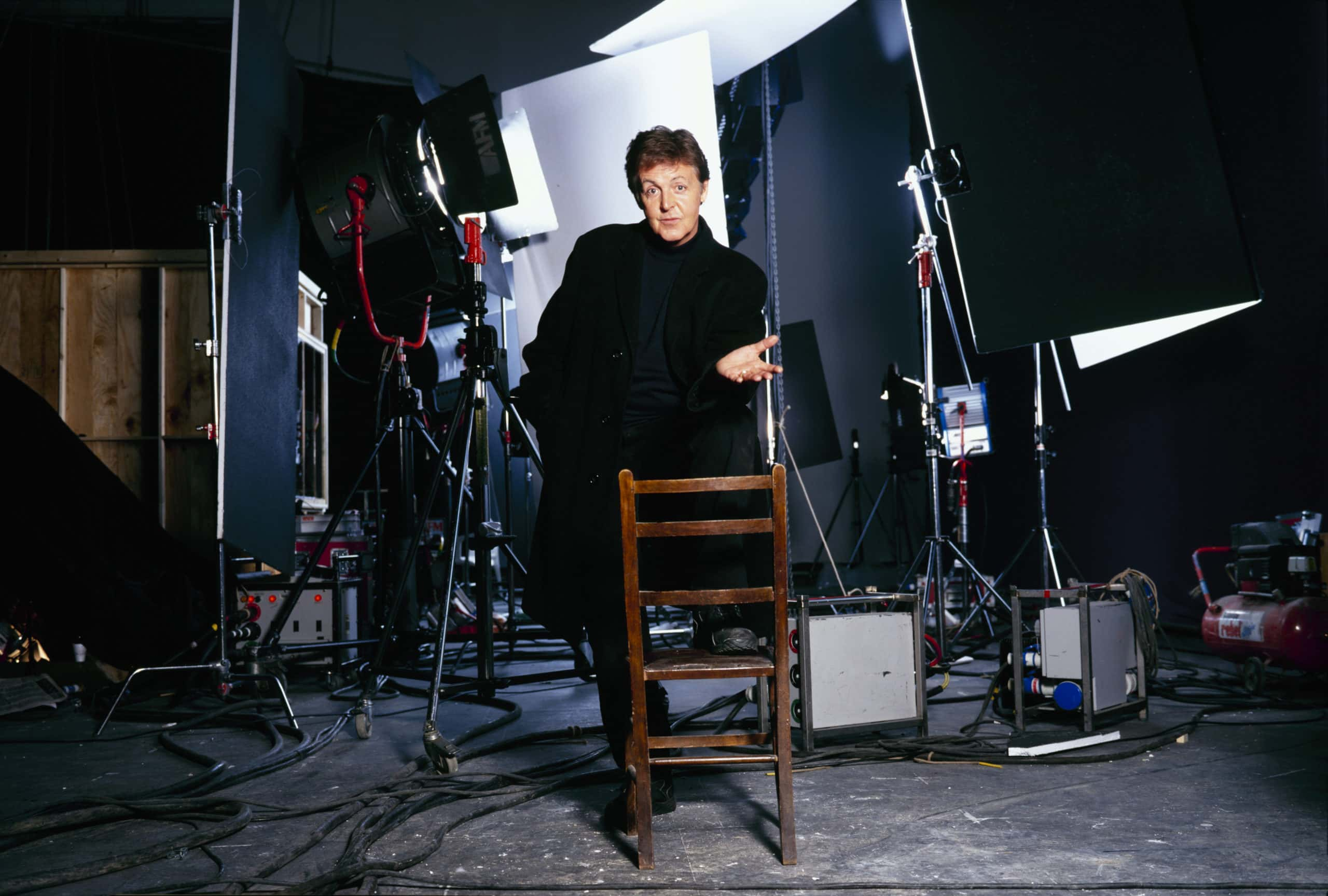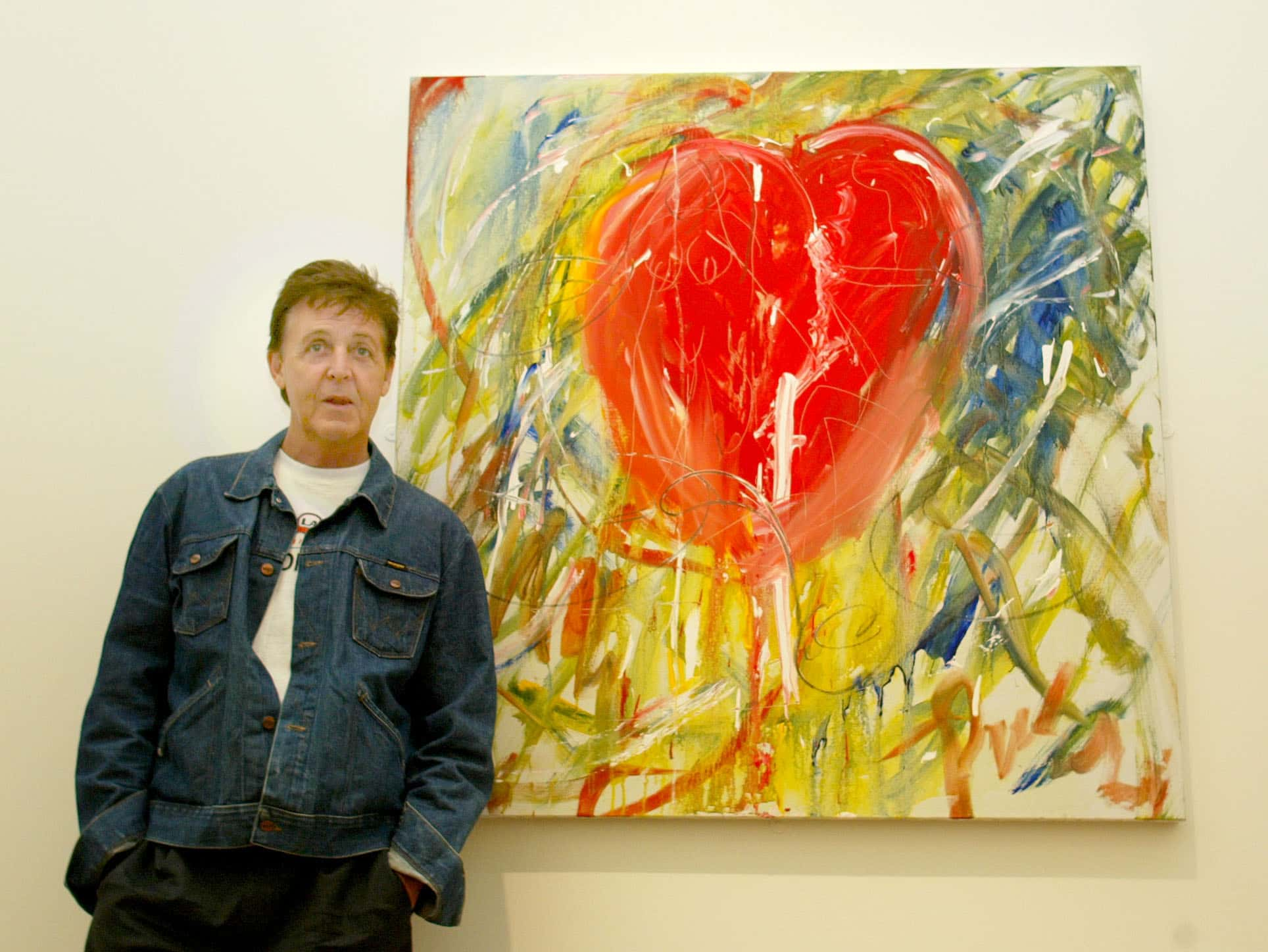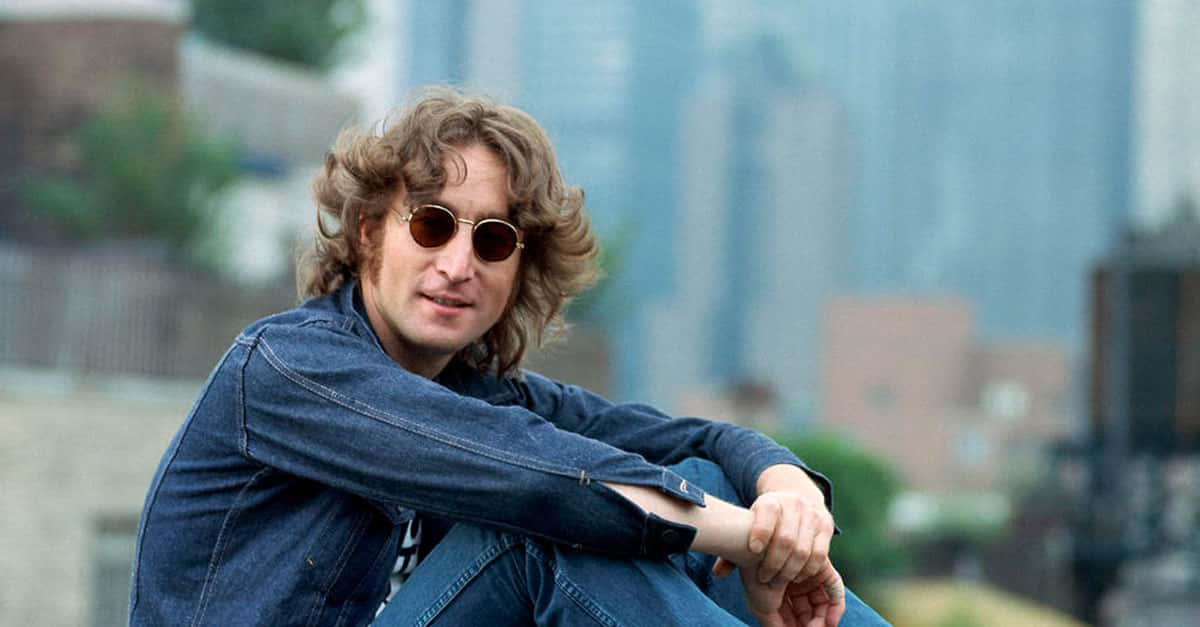Paul McCartney made an indelible mark on music history with his genre-bending songs and flare for experimentation. But the life of a rockstar is peppered with glorious highs and serious lows, and McCartney is no exception. While his popularity raged out of control, his own love life embarked on a twisting adventure. Aching betrayal. Broken hearts. Tragic loss. Paul McCartney's epic songs pull from the very real trials of true love.
1. He Loved His Hometown
On June 18, 1942, James and Mary McCartney welcomed their son James Paul McCartney into the world. When looking back on his humble beginnings, McCartney spoke highly of his parents and the people of Liverpool, describing them as “...The kind of people you need in life. Salt of the earth.” One of these upstanding folks, in particular, encouraged the young McCartney to chase his full potential.
2. He Was A Natural
McCartney’s father—a trumpet player and pianist—delighted in the sound of music weaving through the household. Lucky for him, his son Paul had a natural affinity for it, even learning the piano by ear and joining a choir. When he was 14 years old, his father had a special gift for him—a nickel-plated trumpet. But as we know, this wouldn’t become Paul’s instrument of choice.
3. He Was A Rocker At Heart
Rock-and-roll shook up McCartney’s life and soon he wanted nothing more than a guitar so that he could play and sing at the same time. With this in mind, he promptly exchanged his nickel-plated trumpet for an acoustic guitar—a £15 Framus Zenith. But when he sat down to play, Paul hit a snag—he was left-handed—making the instrument a nightmare to learn.
4. He Struggled To Learn
McCartney found a solution to his left-handed debacle after spotting a poster of another left-handed guitarist—Slim Whitman. After reversing the order of his strings, McCartney was finally ready for take-off. On his Zenith, he wrote his very first song, “I Lost My Little Girl.” He also wrote another song on the piano that would one day become the classic, “When I’m Sixty-Four.”
McCartney undoubtedly had the talent, but now he needed someone to share it with.
5. He Had A Chance Encounter
In 1954, when he was only 12 years old, McCartney met a very special person on the bus. This new acquaintance just happened to be a very young George Harrison—future bandmate and prolific member of the Beatles. Still children trying to make their way in the world, the two of them became fast friends. It wasn’t long, however, before McCartney met another future Beatle and songwriting legend.
6. He Met His People
When he was 15 years old, McCartney listened to John Lennon, and his band The Quarrymen, for the first time at a St. Peter’s Church social. Everything about their sound pulled him in—a generous mixture of rock-and-roll and something called skiffle—a distinct genre of folk music. When The Quarrymen invited him to join their band as a rhythm guitarist, he made a momentous decision that changed his life forever.
7. He Made A Life-Altering Decision
McCartney agreed to join Lennon’s band, and the resulting creative bond changed the course of music history. Lennon famously referred to the meeting as a pivotal moment,“...that was the day, the day I met Paul that it started moving.” Even the site—St. Peter’s Church—became fruitful down the line. A grave in its churchyard inspired the Beatles hit "Eleanor Rigby."
This magical place set the scene for an unpresuming boy band destined for greatness.
8. He Lost His Mother
More than friendship and a love of songwriting bonded McCartney and Lennon. Only a year earlier, McCartney had lost his mother to an embolism suffered during breast cancer surgery. When McCartney met his new band, it was almost like finding a new family. The two of them collaborated at each other’s homes, singing in the bathrooms, and McCartney often stayed for dinner at Lennon's. All was well...Until it wasn’t.
9. He Shared His Grief
Lennon’s mother—Julia—was especially compassionate toward McCartney due to the tragic loss of his mother. But only a year after the two boys met, a similar trauma befell Lennon—a car struck down his own mother and, she too, passed away. McCartney and Lennon now had more in common than ever before—a shared trauma that trickled into their songwriting—two motherless boys trying to make their way in the world. And make their way, they did.

Sign up to our newsletter.
History’s most fascinating stories and darkest secrets, delivered to your inbox daily. Making distraction rewarding since 2017.
10. He Fell In Love
While McCartney relished in his passion for music, he also had passions elsewhere. In 1959, he met his very first serious girlfriend—Dorothy Rhone—at The Casbah Club. But their relationship had a dark side. According to Bob Spitz—The Beatles’ biographer—McCartney had some serious control issues. He wanted a girlfriend, but he also wanted to mold her into his ideal partner. She never stood a chance.
11. He Was Controlling
McCartney’s control over Rhone took on a number of upsetting forms. He curated her wardrobe and selected her makeup. He even wanted her hair done in a specific way. Both he and John Lennon adored Brigitte Bardot, and so, McCartney paid for Rhone to have her hair done in Bardot’s iconic updo. But his penchant for dominance didn’t end there.
He prohibited Rhone’s smoking habit and disapproved of her meeting with friends. Of course, he never subjected himself to the same criticisms he afforded her.
12. He Made It Official
By 1960, McCartney’s troupe had entertained many possible band names, but still hadn’t come to a final decision—there was Johnny and the Moondogs, The Silver Beetles, and Beatals. But right before the band’s residency in Hamburg began, they made a definitive choice and went with the Beatles. With their new identity in hand, they jetted off to Hamburg to make their mark.
They had no idea what lay in store for them.
13. He Wasn’t Faithful
When the Beatles moved to Hamburg, McCartney started writing letters to his girlfriend—Dorothy Rhone. But Hamburg had more than its share of earthly delights, and McCartney admitted to having many other relationships while he was away—most of them with escorts. Apparently his women in Hamburg had the upper hand over Liverpool girls. They were experts in the art of lovemaking. But that wasn’t all.
14. He Tried Something New
In more ways than one, McCartney surrounded himself with gratifying vices. He first tried substances in Hamburg when the entire band started using Preludin—it gave them staying power during long performances. This marked the beginning of his intimate, and somewhat tumultuous, relationship with drug use. But while McCartney actively sought out trouble in Hamburg, it was only upon returning to Liverpool, that his true troubles began.
15. He Had No Choice
After his eye-opening stint in Hamburg, McCartney returned home to Liverpool. That’s when his girlfriend, Rhone, told him her news. He couldn’t believe it. Rhone was pregnant. He was going to be a father. Accepting his fate, McCartney asked Rhone to marry him, and they set a wedding date. With happily ever after in sight, everything seemed to be on track.
But an unforeseen tragedy ruined their plans.
16. He Wanted Out
Sadly, Rhone suffered a miscarriage before she could tie the knot with McCartney. Now free from obligation, McCartney saw his opening and ended the relationship only weeks after the loss of their unborn baby. Now untethered to any real commitment, McCartney and the Beatles had every opportunity available to them. It was only a matter of a time before their popularity rocked the world.
17. He Was On A Roll
1962 was a big year for McCartney—both personally and professionally. By this time, both Ringo Starr and George Harrison had joined the Beatles. The band wrote their first hit with “Love Me Do” and the next year it became increasingly popular across the UK. By 1963, McCartney and Lennon had become a songwriting power duo, penning notable hits such as “I Saw Her Standing There” and “Can’t Buy Me Love.”
It wasn’t long before their music crossed the ocean, gaining momentum in America. But whatever success they enjoyed, nothing could prepare them for what came next.
18. He Was The “Cute Beatle”
These four dapper musicians incited a devoted fandom and its resulting hysteria became known as Beatlemania. Screaming. Fainting. Crying. The girls simply couldn’t get enough of this burgeoning boy band. McCartney was often called the “cute Beatle” and he quickly became a teen heartthrob. But while everybody wanted to date him, Paul was sorely unavailable. He’d given his heart to someone new.
19. He Liked Red-Heads
McCartney met red-headed beauty—Jane Asher—in the spring of 1963. Prior to a Beatles concert at Royal Albert Hall, a photographer asked the band to pose with the excited British actress. She had been sent by the Radio Times to cover the show and was completely taken by the charming group. But she wasn’t the only one starstruck.
All the band members had their eyes on Asher, and as McCartney recalled,"we all fancied her.” After inviting her back to their hotel, only one question remained—which Beatle did she fancy the most?
20. He Took Her Home
At the end of the day, it was McCartney who had the pleasure of escorting Asher home and tentatively asking her out on another date. After being photographed leaving the Prince of Wales theatre together, the couple’s blossoming romance became public knowledge. They quickly became a high-profile commodity and were featured consistently in the media.
But beyond the flash of the camera, McCartney was completely taken by his new girlfriend. To him, she was the real deal.
21. He Fell Hard
According to Cynthia Lennon,"Paul fell like a ton of bricks for Jane...Paul was obviously as proud as a peacock with his new lady. For Paul, Jane Asher was a great prize.” As 1963 progressed and the Beatles met with unprecedented success, it became harder and harder for McCartney to live a normal life. Both he and Asher could no longer walk the streets or visit hotels without being surrounded by adoring fans or eager photographers.
He wanted to get away.
22. He Was A Homebody
McCartney and Asher holed up in her parent’s home in London, and he eventually moved into their attic, living with them for the next three years. His time spent at 57 Wimpole Street was varied and introspective. Asher’s mother—a music teacher—taught him how to play the recorder and often gave him informal lessons.
But this residence was more than a refuge...It was the place where some of the greatest songs ever written had their origin stories.
23. He Had A Genius Collaborator
Many memorable Beatles tunes were written in Asher’s basement music room. McCartney and Lennon wrote “I Want To Hold Your Hand” in an inspired frenzy—”We wrote a lot of stuff together, one-on-one, eyeball to eyeball” recalled Lennon. Another classic tune written under this roof was “Yesterday,” McCartney rolling out of bed and plinking out the dreamed melody on his piano. But his new home’s freedoms didn’t end there.
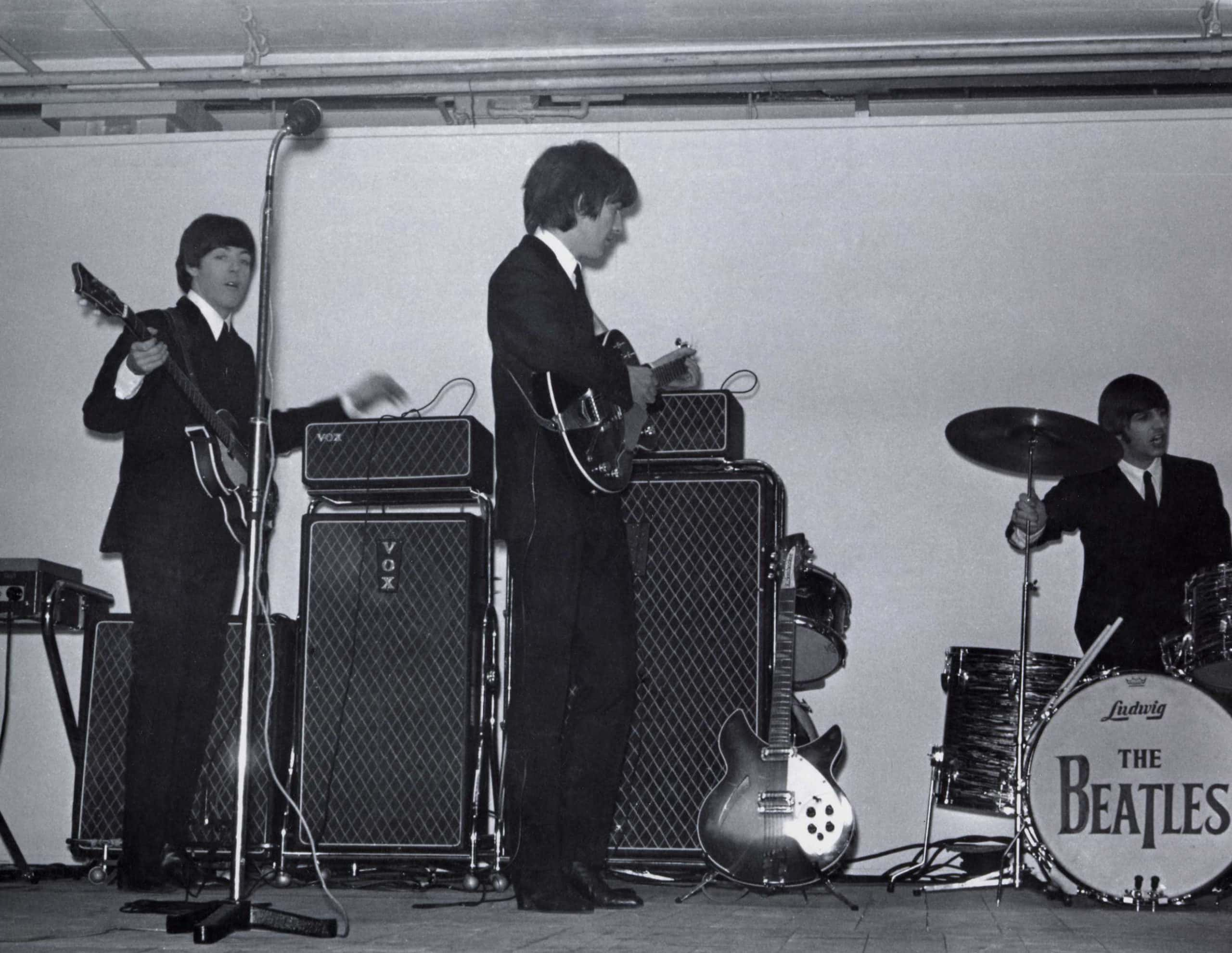 Flickr, Public Record Office of Northern Ireland
Flickr, Public Record Office of Northern Ireland
24. He Was Inspired
Living in the heart of London with the Ashers opened up a whole new world to McCartney. He went out to high-brow parties, meeting artists, musicians, and intellectuals. More than anything, he wanted to steep himself in the culture and come out with inspired ideas—ideas and experimentation that he could apply to the Beatles’ music.
But even with this healthy home life, McCartney and Asher still faced their fair share of romantic tension.
25. He Didn’t Want To Lose Her
McCartney constantly came up against Asher’s desire for independence, especially in her career. She had a real passion for acting and wanted to amount to more than a Beatle's girlfriend. She was opinionated and stalwart, and even though this drove McCartney up the wall, he felt broken without her. Their relationship shifted in 1967, when Asher left on a five-month acting tour.
When she returned, everything had changed.
26. He Flew Sky High
While Asher was away, McCartney experimented with LSD for the first time. At first, he was unsure about hallucinogens, but he soon gave into temptation and indulged in a second “acid trip” with Lennon after a day of recording Sgt. Pepper. Down the road, McCartney was the first of his bandmates to share his opinion on the drug.
He remembered,"It opened my eyes ... [and] made me a better, more honest, more tolerant member of society."
27. He Was A Changed Man
When Asher returned from her acting tour, she felt like a total outsider. McCartney and John had embarked on a drug infused adventure that she played no part of. Jealous and excluded, she felt disconnected from the new McCartney—a man greatly affected by his spiritual highs. But their problems went even deeper than this disconnect.
At the heart of it all, she had every reason to resent him.
28. He Kept It A Secret
Throughout his relationship with Asher, McCartney still entertained the company of other women. Because he wasn’t married, he didn’t recognize this as a moral failing of any kind. However, with the press constantly hounding him, he was smart enough to keep his infidelities on the down-low. He led the life of a rockstar, falling prey to his ravenous groupies and pursuing affairs with American actresses such as Peggy Lipton. But he couldn’t keep these betrayals quiet forever.
29. He Broke Her Heart
The media consistently predicted McCartney and Asher’s imminent marriage, and on Christmas Day 1967, they proved everyone right by announcing their engagement. However, it wasn’t long before the fairytale came crashing down around them. When Asher returned home unannounced one day, she caught McCartney in bed with his American girlfriend—Francie Schwartz.
Devastated, she turned around and walked out.
30. He Couldn’t Save It
By the summer of 1968, McCartney’s five-year relationship was over. Asher announced their harrowing split on a BBC show called Dee Time,”I haven’t broken it off, but it is broken off, finished. I know it sounds corny, but we still see each other and love each other, but it hasn’t worked out. Perhaps we’ll be childhood sweethearts and meet again and get married when we’re about 70.”
After this hopeful and sad statement, Asher has since remained tight-lipped about her time spent with McCartney.
31. He Was Avant-Garde
During the 60s, the Beatles underwent a number of transformations. McCartney, increasingly fascinated by the avant-garde scene, brought experimentation and conceptual ideas to the table. He even made a couple avant-garde films himself. While the song “Tomorrow Never Knows” is greatly credited to Lennon’s experimentation, its unique sound actually came from McCartney through the use of tape loops.
But with two creative geniuses heading the band’s direction, conflict was inevitable.
32. He Was Exhausted
While contention between McCartney and Lennon began early on during the production of Rubber Soul, the health of the entire band suffered as their fame rapidly grew. The constant touring had exhausted them all and McCartney later likened this lackluster period to “losing our souls.” After their 1966 US tour, the Beatles stopped performing for good. But McCartney wasn’t ready to give up.
33. He Wanted A Fresh Start
McCartney was the real catalyst for the concept album Sgt. Pepper’s Lonely Hearts Club Band. He wanted to create a new persona for the band to inhabit,”We were fed up with being the Beatles...We were not boys we were men ... and [we] thought of ourselves as artists rather than just performers." While the album enjoyed critical success and is still considered one of the best albums of all time, it truly marked the beginning of the end.
34. He Was A Leader
In 1967, the band received devastating news. Their manager and father figure—Brian Epstein—had died. McCartney quickly filled the leadership role, but not everybody in the band was happy about it. According to Lennon, McCartney led the band in circles and it wasn’t long before everything started to fall apart. But while tension in the band mounted, McCartney found somewhere soft to land.
35. He Met Her At The Wrong Time
Paul McCartney met talented photographer—Linda Eastman—a number of times before officially asking her out. In 1967, their first introduction at the Bag O’Nails club led to them sporadically meeting whenever they found themselves in each other’s city. But at the time, McCartney was still with Jane Asher, and any possibility of a serious relationship seemed out of the question.
Nevertheless, the two of them shared an undeniable spark of attraction. All they needed was the right timing.
36. He Was Serious About Her
After McCartney and Asher broke off their engagement, McCartney started to think about his chemistry with Eastman,”I suppose I was thinking back over all the girls I’d known, and wondering who was the favorite to get serious with, and she was one who always came into my mind.” In September of 1968, he took a leap of faith and called her.
37. He Needed To Step Away
McCartney asked Eastman to hop on a plane and join him in London. His instincts were right and soon the two of them had fallen deeply in love. The next month, after finishing The White Album, he joined Eastman in New York where he had the chance to bond with her five-year-old daughter, Heather. This was a rare moment of peace for the harried musician. He couldn’t wait to explore this new city.
38. He Blended In With The Crowd
During this time, McCartney sported a beard that offered him a semblance of anonymity—especially in a fresh city like New York. For once, he could walk around unrecognized and ride the subway without being mobbed by excited fans. By the end of the year, McCartney was positive that Eastman was his life-partner, and while on a trip to Portugal, popped the big question.
39. He Didn’t Invite Them
McCartney and Eastman married in the spring of 1969. It was a joyous and understated occasion with the bride already four months pregnant. However, there seemed to be a glaring discrepancy with the guest list. None of the other Beatles were in attendance. But this was no mistake. McCartney had intentionally forgotten to invite his bandmates.
”Maybe it was because the group was breaking up. We were all pissed off with each other. We certainly weren’t a gang any more. That was the thing. Once a group’s broken up like that, that’s it.”
40. He Wasn’t Dead
In the autumn of the same year, McCartney became the subject of an urban legend that people still talk about. This conspiracy believed that McCartney had actually died in a 1966 car crash and that the band had found a lookalike to replace him. This theory became widely known as “Paul is dead” and fans started looking for clues in the Beatles’ lyrics and art that supported this.
In order to appease his fans, McCartney had no choice but to respond.
41. He Proved Them Wrong
McCartney posed with his wife, his new baby Mary, and adopted daughter Heather for the cover of Life magazine, thus proving to the world that the rumors were unfounded—the title of the cover read “Paul is still with us.” Thankfully, the rebuttal worked and the “Paul is dead” conspiracy started to fade. But while fans were assured that they still had Paul, nothing could prepare them for losing the Beatles.
The band was at its wit’s end, and with animosities too great to overcome, one member in particular pulled away from the pack.
42. He Was Depressed
On April 10, 1970, McCartney announced that he was leaving the Beatles. The collapse of the band he had once called family sent him into a spiralling depression. While he languished in grief, his wife came to his aid and gave him all the encouragement he needed to pick himself up and try again. She reminded him of his talent and potential and soon he was ready to start something new. He had a new project on the horizon.
43. He Tried Something New
McCartney wrote a very special song for Linda—"Maybe I’m Amazed”—to commemorate the strength she lent him during the Beatles breakup. After debuting a successful solo album, he put together a new band called Wings. Although Linda was never known for her vocal abilities, McCartney made sure to include her in the line-up.
It was nerve-wracking to launch a band in the wake of the Beatles’ success, but in the end, McCartney had nothing to fear.
44. He Couldn’t Believe It
Wings started out small and met with giant success. The next decade boasted accolades for McCartney and the band, his life moving on from his time as a Beatle. But nearing the end of the Wings’ era, something terrible happened. John Lennon had been shot. He was never coming back. When the reporters cornered McCartney outside a recording studio for his reaction to this earth-shattering news, they couldn’t believe his response.
45. He Had Regrets
McCartney responded to John Lennon’s passing with a flippant remark that stunned everyone,"Drag, isn’t it?” Later on, he deeply regretted this response, boiling it down to the overwhelming shock of the situation. He just didn’t know how to put it into words. To this day, McCartney remains saddened by the nonsensical passing of Lennon. But this wasn’t all.
46. He Let Her Go
In 1995, Linda McCartney found out she had breast cancer. The only problem was that they discovered it too late. After the cancer spread, the doctors gave her only 18 months to live. Allegedly McCartney’s last words to her painted a peaceful picture,"You’re up on your beautiful Appaloosa stallion. It’s a fine spring day. We’re riding through the woods. The bluebells are all out, and the sky is clear-blue.”
47. He Saw Her In A Dream
One of McCartney’s most memorable songwriting inspirations came from a vivid dream. Although many people believed the “Let It Be” lyrics about “mother Mary” had religious overtones, it was actually about his own mother—Mary. During a stressful time in his life, his late mother appeared to him in a dream and assured him that everything was going to be fine and to “let it be.”
When he awoke, he went to the piano and let the song flow out of him.
48. He Had A Feud
In the late 70s and onward, McCartney and Michael Jackson collaborated on a number of tunes. But what seemed like a promising friendship quickly turned sour. In 1985, Jackson bought the publishing rights to the entire Beatles catalog—right out from under Paul McCartney. It was a diabolical move that had McCartney bowled over by its blatant betrayal.
49. He Won In The End
McCartney proceeded to write Jackson a couple letters, seeking some kind of compromise, but barely got a response. For Jackson, it was “just business.” Even when things seemed sketchy, McCartney played the gentlemen, refusing to speak poorly about Jackson. Luckily for McCartney, he secured the rights to his music in 2017—a massive feat for the 75-year-old artist.
50. He's A Painter
Not content with just being a musical maestro, McCartney has also dabbled in painting. He first became interested in painting after spending time with abstract expressionist Willem de Kooning in his New York studio, eventually exhibiting his work in Siegen, Germany in 1999. The following year, he held an exhibition in Liverpool’s Walker Art Gallery, where, in his youth, he spent a lot of time with John Lennon.


